BVV

Color Remediation Column CRC w/ Bypass
Color Remediation Column w/ Bypass The CRC is a secondary column used as a filtration cartridge for hydrocarbon and ethanol extraction systems. Filter medias are packed in the column above a triple filtration stack, which aids in the removal of impurities from extracted oils. The CRC features a bypass path, allowing the operator to skip the column in case of a clog. The color remediation process is made simple by bundling the cartridge with the needed filter medias. We have paired the unit with suggested media, supplied in the proper ratio, and a standard operating procedure. The included procedure takes all the guesswork out of filtration, delivering the desired results the first try. Our CRC comes available with 1/4",3/8", and 1/2" MJIC connections, your choice of a 3",4", and 6" diameter spool with a 12" height, and rack mounting brackets standard to accommodate systems of any size. This Kit Includes: Color Remediation Column Rack Mounting Brackets 100 pack of 8 and 20-micron filter papers 1000g or 2.5 kg of Activated Alumina 1000g or 2.5 kg of Silica 60A 1000g or 2.5 kg of Pure-Flo® B80 (81, 5000, 6000 or Color Bleach)*Substitutes 1000g of Celite®545 Instruction Manual
$1,201.08 - $1,907.59
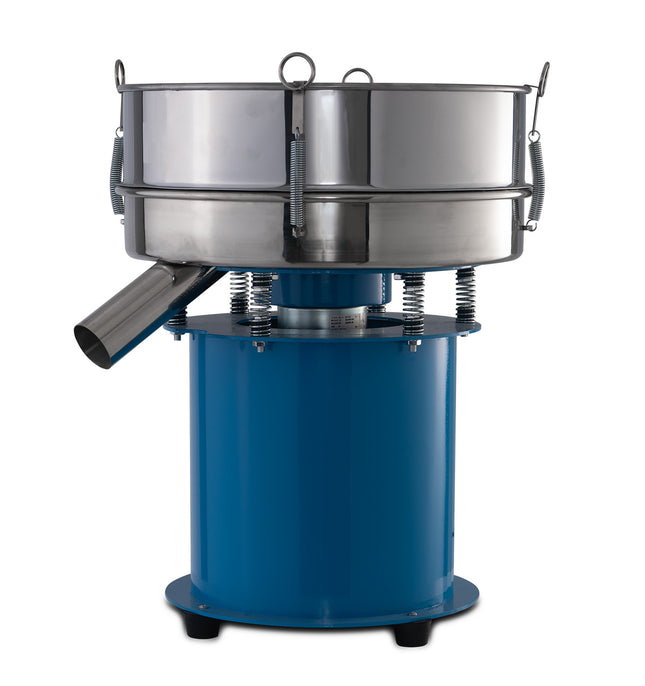
Commercial Vibrating Sifter - 15.50 x 4" (Compare to Custom Cones)
Automatic Vibrating Sifter - Commercial 15.50 x 4" Sifting your plant material is an excellent way to remove stems automatically. This commercial sifting machine was explicitly designed with processors in mind - the stainless steel construction and screens ensure you can easily clean our sifter, and the screen sizes are fine-tuned for the most common sifting needs. The commercial grade sifter offers a larger diameter, coming in at 15.50 inches, compared to the 11.75 inches of the original starter sifter - this means you'll be able to sift more plants in one sitting! Once you've ground your plant material, you only need to pour it into the sifter and switch it on. You can now walk away and wait for your plants to be automatically sifted - no more standing around doing manual sifting. Sifting your biomass will not only ensure no stems make it into your final product but will also ensure nothing else makes it into your product, like large leaves, gravel, or any other foreign matter. Additionally, consistent grinding will make your product burn more evenly and pack more evenly in any cone-filling machine. Plant Material Specific Sifter The commercial sifter was explicitly designed for plant material processors. From its stainless steel construction to multiple screen sizes, our team of Experts is confident this sifter or our other larger sizes will be the perfect addition to your product production process. We offer multiple screen sizes, allowing you to customize the particle size for the plant material in your product. Depending on the strain or weight of the product you are making, you may want to experiment with various screen sizes. Multiple Screen Sizes When it comes to sifting your plant material, you will want to have an ideal particle size for your plant material in mind. If you are still determining what size screen you need, our team of Experts is here to help! Depending on your strain and grinder, your ground biomass will have a different consistency. Additionally, depending on the size of the cone you are using and your desired fill weight, the particle size of your plant material will play a significant role. For example, a smaller particle size will allow you to pack more plant material into a small cone, but a particle size that is too small may lead to a poor, uneven burn. Specifications PURPOSE: Sifting Ground plant materialCONSTRUCTION: Stainless SteelSCREEN DIAMETER: 15.50 inchesMACHINE TYPE: SifterPOWER REQUIREMENT: 120vRATED VOLTAGE: 110VRATED FREQUENCY: 60HzRATED POWER: 50W
$1,413.03

Compact In-line Sight Glass Female NPT Stainless Steel (Flow Sight)
The body of the flow sight is 304 stainless steel. The glass sight has a pressure tight, solid gasket design with Viton seals. The unit tolerates temperatures up to 180° F. The maximum recommended pressure is 125 PSI. BVV™ FNPT Stainless Steel Sight Glass - Data Sheet Specifications 1/4" 3/8" 1/2" 1" Body Material 304 Stainless Steel Gasket Material Viton Length 2-3/16" 2-1/4" 2-1/2" 2-7/8" Width 7/8" 1" 1-1/4" 2" Viewing Port Size 1" 1-1/8" 1-3/16" 1-1/4" PSI Rating 150 150 100 100
$108.80 - $176.63

Compression Ball Valve
BVV manually operated two-way ball valves provide quick ¼ turn directional flow control of fluids in instrumentation and process systems. Features: Directional handle indicates flow direction Panel Mountable 90-degree actuation Straight through flow path Micro-finished ball provides positive seal Free-floating ball design provides compensation for seat wear for repetitive sealing Blow-out proof ball & stem BVV™ Compression Ball Valve - Data Sheet Specifications Body Material 316L Stainless Steel Pressure Rating @ 100F 1000 PSIG Connection Type 1 Double Ferrule Tube Fitting Connection Size 1 Specified by User Connection Type 2 Double Ferrule Tube Fitting Connection Size 2 Specified by User Handle Type Nylon-Stainless Steel Insert Handle Color Black Packing Material PTFE
$113.04 - $211.95
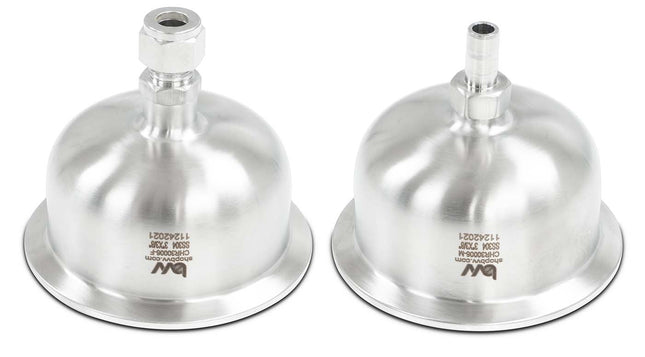
Compression Connection Hemispherical Reducers
BVV Compression Connection Hemispherical Reducers BVV Compression Connection Hemispherical Reducers allow the user to connect differently sized Tri-Clamp parts with compression connection fittings to each other without adding to the overall size of your extraction system. These reducers are offered in Tri-clamp x Female or Male 3/8" Compression Connections. Specifications: Material: 304 Stainless Steel High Polish Interior Standard: 3A Connection Types: Tri-Clamp x Female or Male 3/8" Compression Connections
$70.65 - $134.24
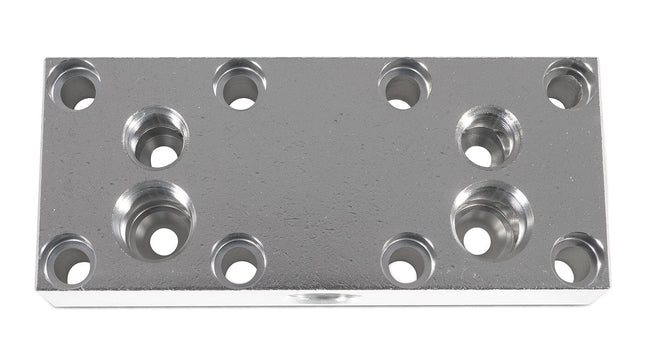
Compressor Head BARE for BVV Recovery Pump/ CMEP Retrofit
This is a replacement compressor head for the BVV2CYL, BVV4CYL, and BVVCMEP-RETRO. It is a full stainless steel head and has all the proper holes drilled to fit on our recovery pumps.
$49.46$32.50
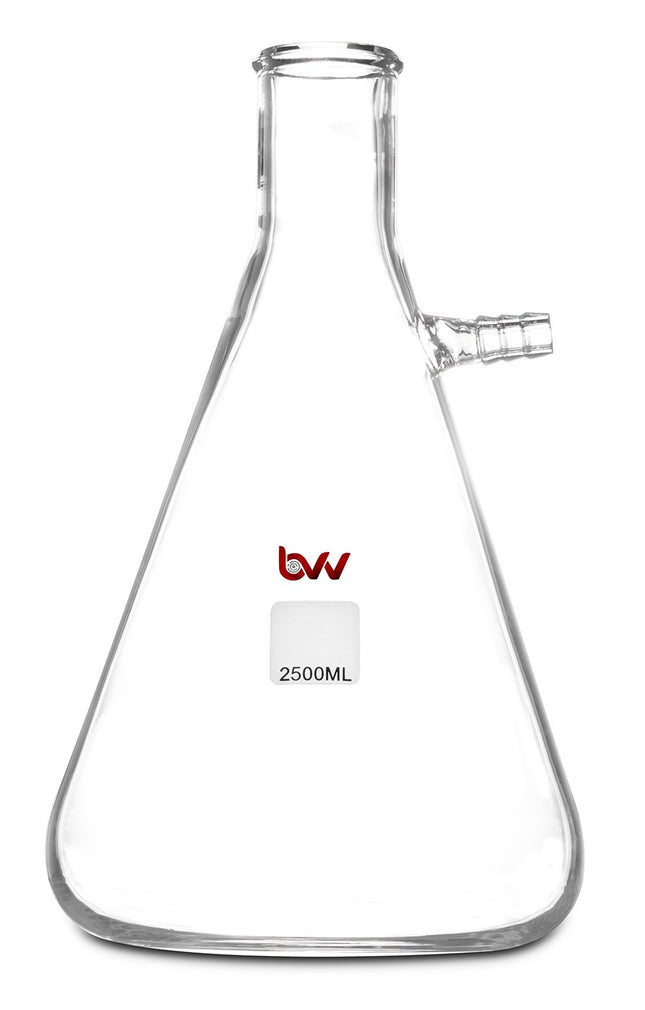
Conical Flask Filtering with Internal Side Arm
Conical Flask Filtering with Internal Side Arm These BVV™ Conical filtering flasks come with a non-jointed opening and a barbed side arm that can easily hook up to a vacuum pump. These flasks come in either 2500ml or 5000ml and are meant to be used with porcelain buchner funnels and rubber cones to create a positive vacuum seal. Barb Size- 2500ml: 14mm barb 5000ml: 16mm barb *Notice to customers: All units are inspected for broken glassware or parts before leaving BVV™. If the unit arrives damaged (this does not include minor imperfections or scuffs in glassware), the customer MUST contact BVV™ within 72 hours from carrier delivery to file a claim. If the customer DOES NOT contact BVV™ within 72 hours from carrier delivery, then BVV™ cannot issue any replacement(s) or compensation for the item; a new purchase will need to be made for a replacement. **Glassware Safety Disclaimer: BVV™ is not responsible for failure of glassware which must be inspected before and after every use because it may eventually develop imperfections or damage through normal usage, mishandling, and stress caused by temperature variations. If an imperfection or damage is noted while inspecting the glassware DO NOT use the glassware because it can fail causing bodily harm or damage to the surrounding area.**
$70.65 - $91.85
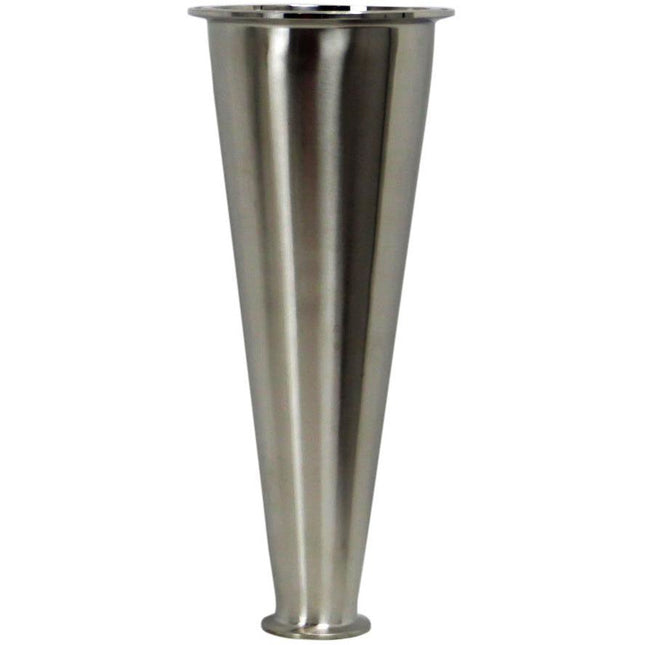
Conical Tri-Clamp Reducer
Conical Tri-Clamp/ Tri Clover Reducers Conical Tri-Clamp reducers allow the user to connect differently sized Tri-Clamp parts to each other while adding smoother flow to your extraction system. These reducers are offered in Tri-clamp x Tri-Clamp connections Specifications: Material: 304 Stainless Steel High Polish Interior Standard: 3A Connection Type : Tri-Clamp x Tri-Clamp
$28.26 - $233.15
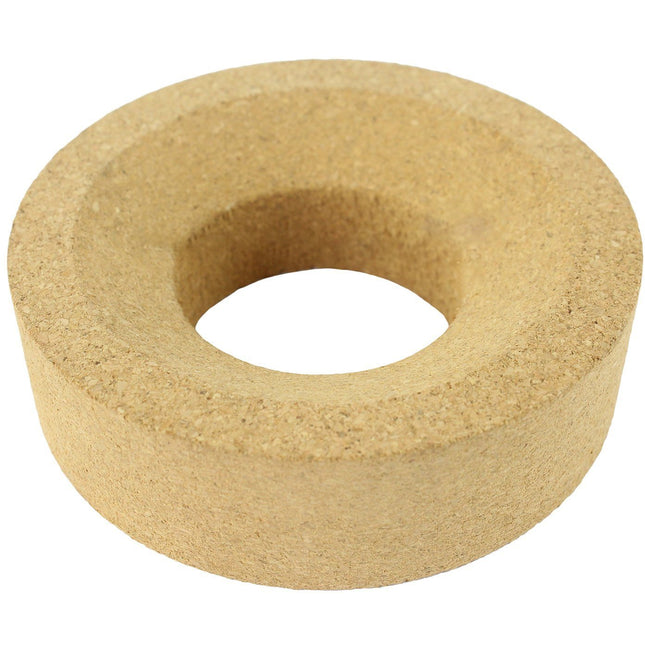
Cork Stand
Cork Stands Cork stands are used with laboratory glassware to help balance round bottom flasks or prevent damage or support a piece of glassware that is put on it. ***Note: Sizes correlate to round bottom flasks ml sizes. Sizes Available: 250-500ml 500-1000ml 1000-2000ml
$8.48 - $11.30
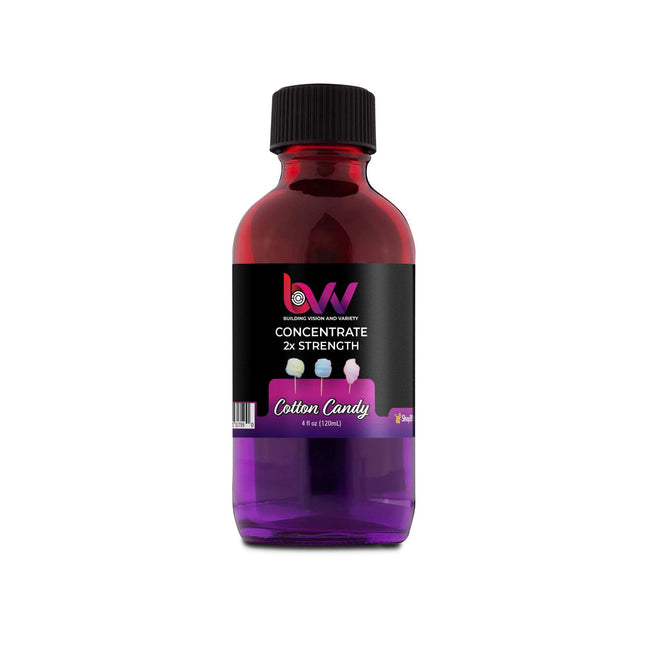
Cotton Candy
BVV™ Cotton Candy All sales are final. Orders can be refunded prior to fulfillment and shipping but once the order has been fulfilled and/or shipped, no refunds will be issued. Due to the hazardous nature of our product, we are unable to accept returns. BVV™ Concentrates are botanically derived terpenes enhanced with "nature-identical" artificial flavors. These flavors boost the natural flavor profile of the concentrate, providing the user with a more pleasant vaping experience. In order to provide complete transparency and elicit customer confidence, all ingredients are disclosed in the technical datasheet. BVV™ Cotton Candy Safety Data Sheet Cotton Candy is truly a delight for the senses. It has a bright, sweet, sugary flavor that taste exactly like cotton candy. It has been known to make a person, calm, happy, and giggly. The Cotton Candy strain can also assist with alleviating anxiety and depression. FRAGRANCE: Sweet, fruity, and berry. EFFECT: Uplifting, euphoric, energetic accompanied by a soothing sensation. Storage Requirements: Keep in the original container, lid securely tightened and away from heat, open flames, sunlight, combustible materials, and hot surfaces. Store below 15℃ (60℉). Improper storage can cause terpenes to degrade. Dilution: Concentrates must be diluted prior to use for flavor and effect (1-3% by total volume). Concentrates are oil soluble and mix well with plant extracts, coconut oil, and more. Handle With Care: Can cause skin irritation, do not ingest PRIOR to dilution.
$14.13 - $211.95
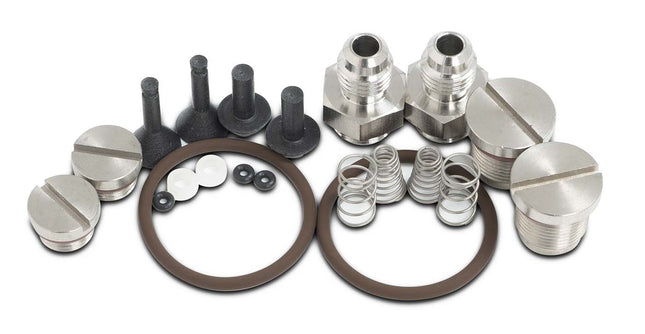
CPS TRS21 Compressor Head Complete Stainless Rebuild Kit
CPS TRS21 Compressor Head Rebuild Stainless Kit Upgrade the compressor head on the TRS21 to be compatible with CBD oils by replacing all the existing O-ring seals with Viton. Replace all brass fittings with Stainless Steel to by inline with FDA on consumable products. Replace springs and valves. Compressor Head Rebuild Instructions
$113.04

CPS TRS21 Top Dead Center Piston Depth Calibration Plate
CPS TRS21 Top Dead Center Calibration Plate & Bolts Use with the Top Dead Center Clearance (TDCC) instructions Use this plate and a depth gauge to measure the Top Dead Center Clearance of the piston/cylinder/head assembly. Shims that come with the piston cylinders are stacked to create an area of displacement between the top of the cylinder and the compressor head. BVV's Recommended depth is between 0.008" and 0.012" for the CPS TRS21 for optimum performance. Top Dead Center Clearance Instructions *Depth Gauge Not included, its only used for reference in the photo. Any type of simple digital depth gauge will work to check the piston displacement.
$28.26
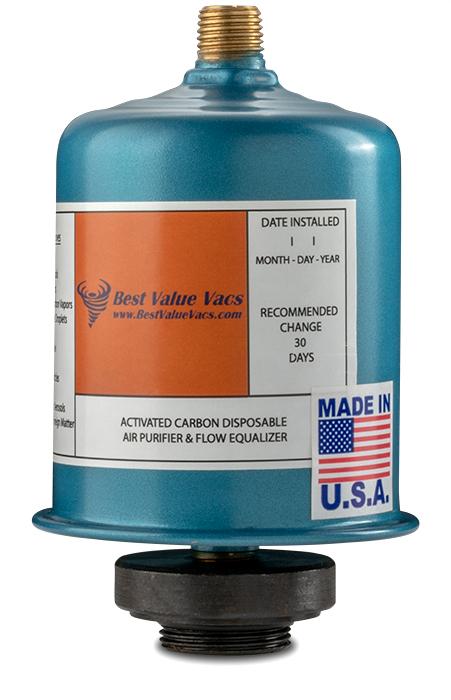
CPS Vacuum Pump Activated Carbon Exhaust Filter
Carbon Exhaust Filter for CPS Vacuum Pumps Replaces Koby Junior (US Patent# 3169112A) CPS Vacuum Pump Activated Carbon Filter for use with CPS brand vacuum pumps. This filter will adsorb contaminants such as oil aerosols, oil vapors, certain other hydrocarbon vapors, and trace moisture. They also trap all foreign solid particles and bacteria down to 0.5 microns in size. Key Features: Purifies Exhaust Gases from Vacuum Pumps Up to 19 CFM 0.5 Micron Filtration levels. Helps Maintain Safe Working Environment Adsorbs Organic Vapors and Small Particles High-Efficiency Filtration Minimal Pressure Drop Maintenance Free - Completely Disposable Pressure Safe to 90 PSI M26 x 1.0 - Carbon Steel Pump Connection Filter connections 1/4" NPT Pipe Fitting Connections Removes the following contaminants: Oil Mist Oil Aerosols Oil Vapors Hydrocarbon Vapors Moisture Droplets Dust Pipe Scale Rust Fine Particles Odors Organic Aerosols Other Foreign Matter Lifespan:720 hrs. of continuous operation. (Then replacement is recommended) **NOTE PUMP NOT INCLUDED
$162.50
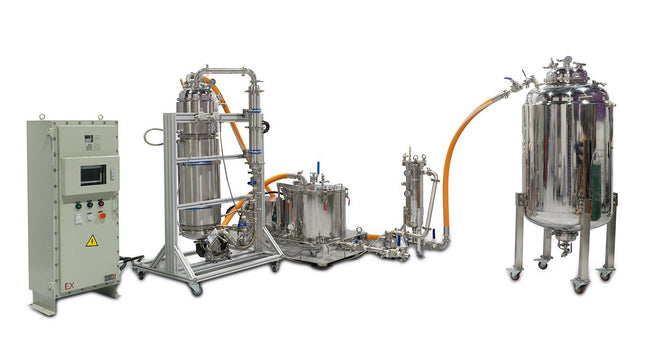
Cryogenic 45L Centrifuge Extractor Kit
Cryogenic 45L Centrifuge Extractor Kit EXPECT 3-WEEK LEADTIME Cryogenic 45L Centrifuge Extractor Kit Overview: The BVV Cryogenic 45L Centrifuge Extractor Kit is a modular closed loop alcohol extraction system with low temperature extraction in mind. It features low temperature rated (-60°C) components including PTFE envelope gaskets, pneumatic diaphragm pumps and cryogenic rated ball valves for longevity. The centrifuge controller and motor are EX rated and come with supporting documents making it easier to get approved for operation. Load centrifuge bags with 8-15lb (10lb avg.) biomass and line them up for an efficient extraction process. This system makes repeatability easier by letting the operator control extraction parameters including soak/agitation time, spin dry time, target alcohol temperature, and different pore material bags and filtration socks in our Pressure Filtration System (PFS). The system also allows operators to re-direct the first wash back to the holding vessel to re-chill if needed and go for a second extraction. This allows full use of alcohol’s extraction ability and minimize time spent recovering solvent in a rotary evaporator or falling film. Users will have to dial in their parameters and washes based on biomass potency. Low temperature extraction leads to less refinement after the extraction process. Inline PFS allows for fine particulate refinement down to 1µm. Higher potency will require further post processing for the removal of unwanted compounds. NOTE: CHILLER AND AIR COMPRESSOR NOT INCLUDED IN THE KIT. CALL IN FOR RECOMMENDED CHILLER AND AIR COMPRESSOR. Insulation: Insulation package is included with the order but does not come installed upon arrival. Insulation included are straight tubing, tees, and elbows. BVV can install insulation as an add on prior to shipping the system out. This will also include color coordinated zip ties that help assembly process. Assembly diagrams will also be included with the system. Installation requires taping seams cutting tubing to length, and zip tying tees and elbows. Holding vessel and centrifuge are vacuum insulated via the jacket. Supporting documents included: Standard Operating Procedure for CF45L-CRYO-01 Centrifuge Wiring Instructions CF45L-CRYO-01 Manual CF45L-CRYO-01 Assembly Diagram Centrifuge Controller EX Certificate Centrifuge Motor EX Certificate Pneumatic Pump specification sheet with operating pressure/flow chart CALL IN TO SCHEDULE A FULL PRESENTATION WITH ONE OF THE CRYOGENIC 45L CENTRIFUGE EXTRACT KIT. QUESTIONS CAN BE ANSWERED BY OUR ENGINEERING TEAM. Specifications Centrifuge Controller Power Requirements 220v 1PH 60Hz, 20A Circuit Liquid Transfer Pumps Pneumatic (Compressor Required) Drum Volume 45L Drum Dimensions 17.7" (450mm) Diameter x 11-7/8" (300mm) Deep Centrifuge Bags Included 1 of Ea: 1, 10, 50, 100, 200 Micron Max Biomass Capacity 15lbs (6.8Kg), Recommended 10lbs Solvent Capacity per Run 17 Gallons Centrifuge Speed 1500 RPM Centrifuge Weight 794lbs (360Kg) Overall System Dimensions 12'6" x 13'8" x 71" (3810mm x 4166mm x 1804mm) **with chiller next to system System Temperature Rating -60C (-76F) Material in Contact with Solvent and Extract PTFE envelope, Silicone, 304SS, BIIR(butyl) *FDA & USDA compliant Footprint: NOTE: CHILLER INCLUDED IN EXTRACTION SPACE WILL NEED TO BE APPROVED FOR USE IN C1D2 SPACE. AIR COMPRESSOR FOR PNEUMATIC PUMPS NOT INCLUDED IN DIAGRAM.
$83,368.90
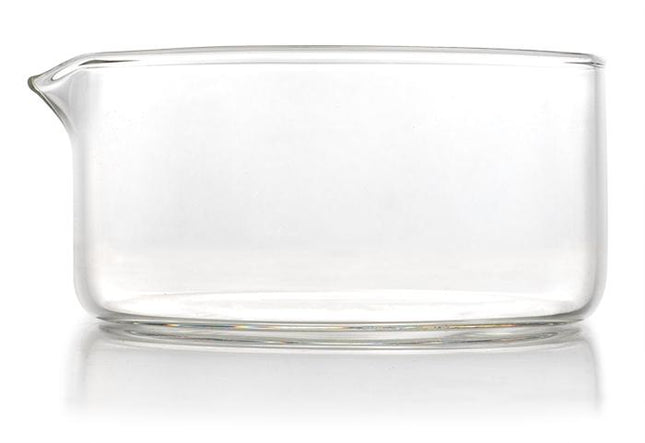
Crystallizing Dish
Crystallizing Dish Crystallization dishes work great for small batch mixing using heating & stirring plates, evaporation of any solvents in small amounts, and crystallization. This crystallization dish is made out borosilicate glass and features a pouring spout making it easy to transfer any liquid substance. Specifications Material Borosilicate External Diameter 98mm (+/- 1mm) Overall Height 49mm (+/- 1mm) Internal Diameter 94mm (+/- 1mm) Internal Depth 47mm (+/- 1mm) Features Pouring Spout
$7.07
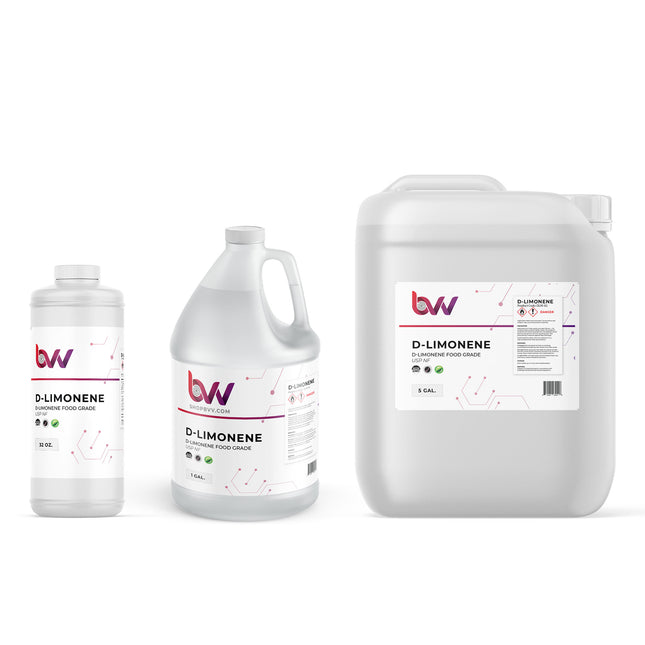
D-Limonene 94% Food Grade Natural Orange Oil
Ultra High Purity D-Limonene 94+% Food Grade HAZMAT ITEMS ARE NON-REFUNDABLE. ALL SALES ARE FINAL BVV™ Ultra High Purity D-Limonene SDS BVV™ Ultra High Purity D-Limonene Certificate of Analysis BVV™'s Ultra High Purity D-Limonene is a naturally occurring terpene compound found mainly in the skin of plants and fruits, such as lemons and oranges. D-Limonene is commonly used as an amazing cleaning solvent that is eco-friendly, great-smelling, and excellent at cleaning stainless steel, scientific glassware, and ceramics. What is d-Limonene? D-Limonene is the major component of the oil extracted from the rinds of oranges. This compound is deemed as the most effective natural solvent and degreaser in science. Applications include grease, oil, tar, adhesives, tree sap, gum, crayon, wax, asphalt, graffiti, blood, grass, soap scum, scuff marks, stickers. In addition, d-Limonene is 100% natural, organic/no synthetic chemicals, non-toxic, FDA approved, biodegradable, and safe to use. Chemical Formula: C10H16 Molecular Weight: 136.238 g·mol−1 CAS Registry Number: 138-86-3 Appearance Colorless Liquid Odor: Orange Density 0.8411 g/cm3 Boiling Point: 176 °C / 349 °F Solubility in water: Insoluble GHS Pictograms: GHS Signal Word: Danger GHS Hazard Statements: H226, H304, H315, H317, H410 GHS Precautionary Statements P210, P233, P235, P240, P241, P242, P243, P261, P264, P272, P273, P280, P301+P330+P331, P302+P352, P303+P361+P353, P304+P340, P312, P333+P313, P362, P370+P378, P391, P403+P233, P405, P501 UN Identification Number: 2319 Proper Shipping Name: Terpene Hydrocarbons. N.O.S Transport Hazard Class: 3 Packing Group: III DOT Placard: PLEASE READ SAFETY WARNINGS ON CONTAINER Warning: Keep Away from heat, sparks, open flames, and hot surfaces. No smoking. Avoid release into the environment. Wear protective gloves, and use eye protection, IF swallowed: Immediately call a poison control center. If on skin: wash with plenty of soap and water. DO NOT induce vomiting. If skin irritation occurs: Seek Medical Advice. Dispose of contents and their containers in accordance with regional, national, and international regulations. Contact with eyes may cause redness.
$49.46 - $4,945.61
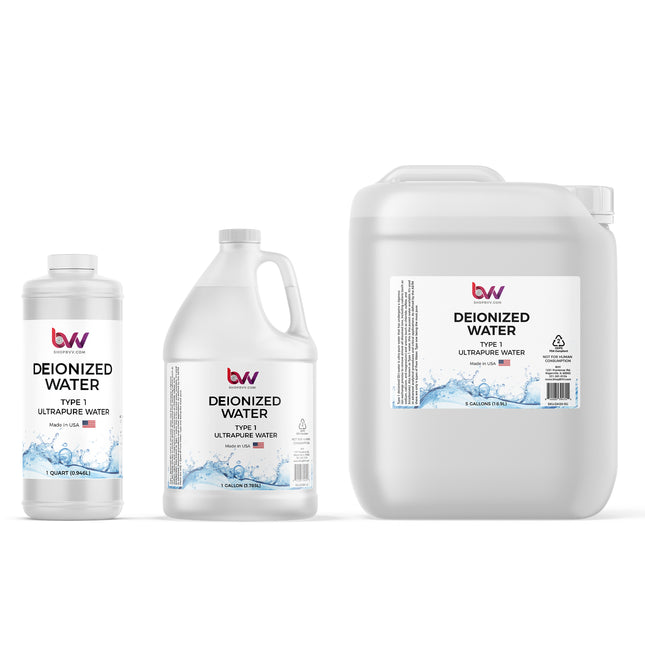
Deionized Water (DI) - Ultrapure Water - Type 1
Deionized Water Ultrapure Water - Type 1 Deionized Water Type 1, also known as ultrapure water, is water that has been processed through ion-exchange methods to remove nearly all of its dissolved ions, such as minerals, salts, and other charged particles. This ultra-purification process results in water with a very low level of conductivity, making it ideal for high-precision applications in laboratories, pharmaceuticals, electronics manufacturing, and scientific research. As defined by the ASTM there are only 4 types of Pure Water. Type 1 being the most pure. Type 1 deionized water is the highest grade of deionized water, ensuring a high level of purity, typically with resistivity values of 18.2 MΩ·cm at 25°C. It is free from contaminants like bacteria, organic material, and particulate matter, making it suitable for critical tasks like reagent preparation, tissue culture, analytical procedures, and cleaning of sensitive equipment. Due to its lack of ions and impurities, Deionized Water Type 1 is non-reactive, ensuring it does not interfere with experiments or sensitive processes, which is essential in fields requiring the highest level of water purity. *Packaged in FDA Compliant HDPE Bottles. Each order is poured directly from the factory drum ensuring you get the freshest stock upon delivery. Deoinized Water Certificate of Analysis COA Deionized Water Safety Data Sheet SDS
$14.13 - $593.47
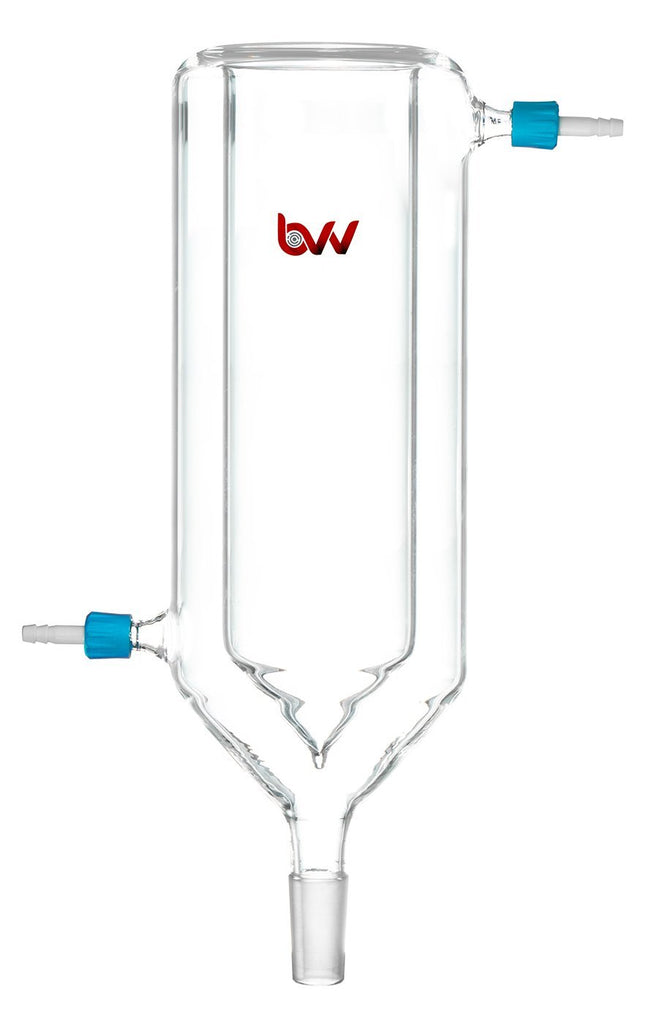
Dewar Glass Cold Trap
BVV™ Dewar Glass Cold Trap This dewar style glass is designed for maximum vapor condensation and it also has a 24/40 bottom joint and (2) GL-14 8mm Hose Barbs *Notice to customers: All units are inspected for broken glassware or parts before leaving BVV™. If the unit arrives damaged (this does not include minor imperfections or scuffs in glassware), the customer MUST contact BVV™ within 72 hours from carrier delivery to file a claim. If the customer DOES NOT contact BVV™ within 72 hours from carrier delivery, then BVV™ cannot issue any replacement(s) or compensation for the item; a new purchase will need to be made for a replacement.
$353.26$296.74
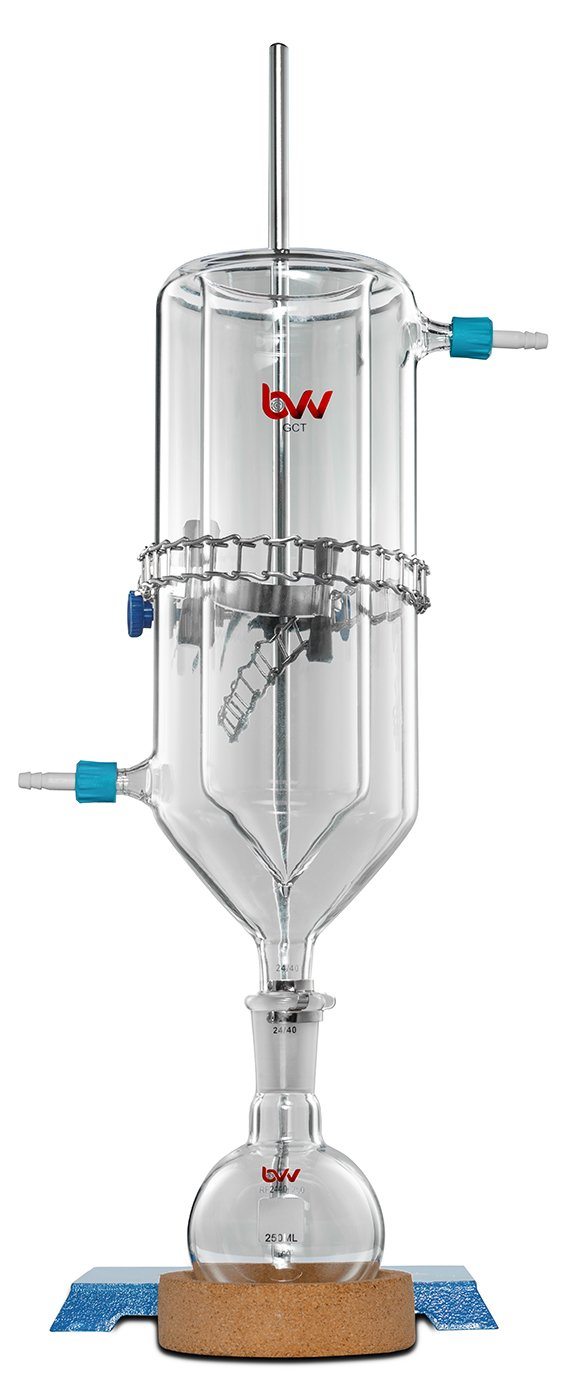
Dewar Style Glass Cold Trap Kit
Dewar Style Glass Cold Trap The Dewar Style Glass Cold Trap with GL-14 Barb Fittings allows the user to load dry ice into the inner portion of the cold trap from the top to allow maximum condensation temperatures. This protects your vacuum pump and captures any vapors that were lost during evaporation or distillation. Made in the USA. Dewar Style Glass Cold Traps includes the following: Metal Keck Clip Boss Head Lab Stand Chain Clamp 250ml Round Bottom Flask 24/40 Joint 250-500ml Cork Stand Specifications: USA Made 24/40 Male Ground Joint GL-14 8mm Barb Connections OD = 3.8" ID = 2.75" Height = 14.75" *Notice to customers: All units are inspected for broken glassware or parts before leaving BVV™. If the unit arrives damaged (this does not include minor imperfections or scuffs in glassware), the customer MUST contact BVV™ within 72 hours from carrier delivery to file a claim. If the customer DOES NOT contact BVV™ within 72 hours from carrier delivery, then BVV™ cannot issue any replacement(s) or compensation for the item; a new purchase will need to be made for a replacement. **Glassware Safety Disclaimer: BVV™ is not responsible for failure of glassware which must be inspected before and after every use because it may eventually develop imperfections or damage through normal usage, mishandling, and stress caused by temperature variations. If an imperfection or damage is noted while inspecting the glassware DO NOT use the glassware because it can fail causing bodily harm or damage to the surrounding area.**
$494.56
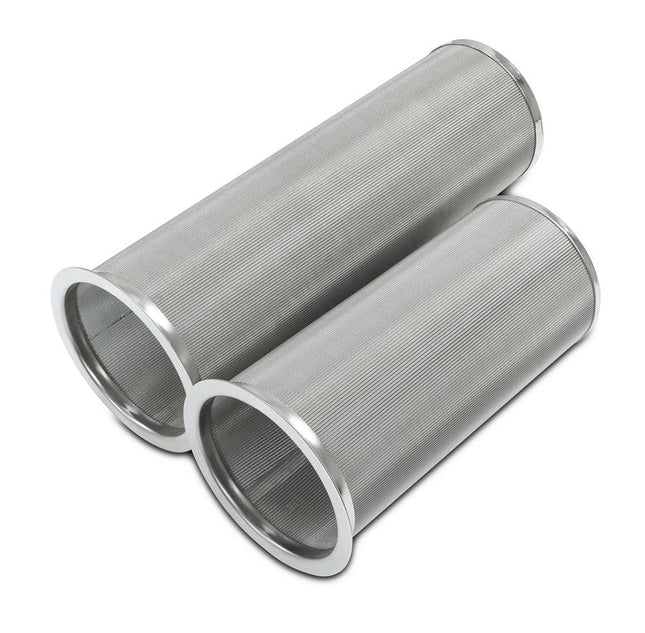
Diamond Sauce Separator Basket Dutch Weave 100 Micron
BVV Diamond Sauce Separator Baskets for your Diamond Sauce Separator sold "A la Carte" The 6" long basket fit the BVV DSS-9 The 8.25" long basket fit the BVV DSS-12 The basket is a Dutch Weave all 304 Stainless Steel basket, and fits inside a 3" tri-clamp spool. The lip perfectly fits the tri clamp flange and works with our Dutch Weave product line gaskets.
$29.67 - $36.74
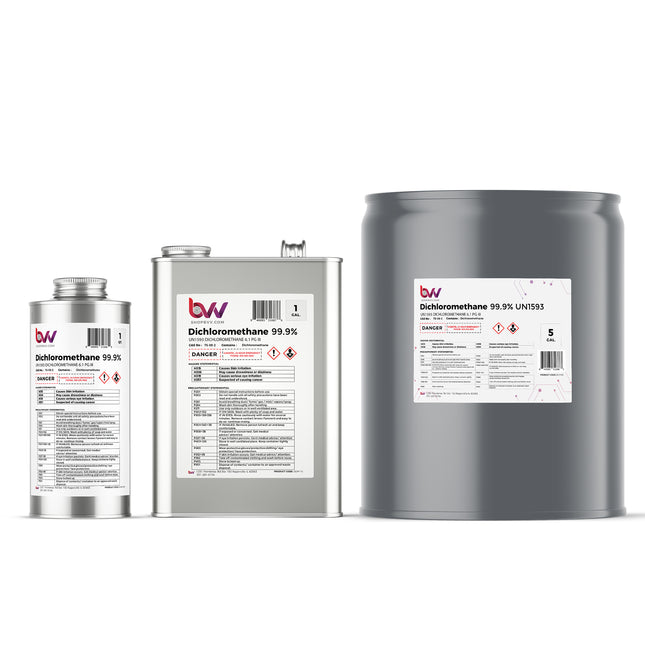
Dichloromethane (Methylene Chloride) Lab Grade
Dichloromethane (DCM) Lab Grade Tested 99.99% Purity (Aka. Methylene Chloride) Dichloromethane is an organochloride that appears as a colorless volatile liquid having sweet chloroform-like odor. This liquid is widely used as a solvent. Although it is not miscible with water, it is polar, and miscible with most organic solvents. Commonly used for partitioning alkaloids from aqueous solutions Dichloromethane or DCM for short is commonly used as an extraction solvent across the food & beverage industry and is well known for its use in the decaffeination of coffee. With a density of 1.33g/cm3 it is denser than water partitioning as the bottom layer during liquid-liquid extraction. With a low boiling point of 39.8C/103.3F Dichloromethane allows for fast drying and the preservation of temperature-sensitive compounds. While Dichloromethane is highly volatile it is actually neither flammable nor explosive in air. Produced through the chlorination of methane along with chloromethane, trichloromethane (chloroform), and tetrachloromethane (carbon tetrachloride, Dichloromethane is the least toxic of the three. While Dichloromethane is less toxic than other chlorinated hydrocarbons it is still known to cause skin and serious eye irritation and may cause drowsiness or dizziness and potentially cancer. During handling always wear appropriate personal protective equipment in the form of tightly fitting safety goggles or face shield, long-sleeved clothing, and an approved respirator if exposure limits are exceeded or if irritation or other symptoms are experienced. Always ensure DCM is handled under adequate ventilation using a chemical fume hood. Avoid getting DCM into the eyes, on skin, or on clothing, and avoid ingestion and inhalation. Dichloromethane should always be stored in a dry, cool, and well-ventilated place with the container tightly closed. Chemical Formula: CH2Cl2 Molecular Weight: 84.93 g·mol−1 CAS Registry Number: 75-09-2 Appearance Colorless Liquid Odor: Faint, Chloroform-like Density 1.3266 g/cm3 (20 °C) Boiling Point: 39.6 °C / 103.3 °F Solubility in water: 17.5 g/L (25 °C) GHS Pictograms: GHS Signal Word: Warning GHS Hazard Statements: H315, H319, H335, H336, H351, H373 GHS Precautionary Statements P261, P281, P305+P351+P338 UN Identification Number: 1593 Proper Shipping Name: Dichloromethane Transport Hazard Class: 6.1 Packing Group: III DOT Placard: What Is Dichloromethane? Dichloromethane, also known as methylene chloride, is a colorless, volatile, and sweet-smelling organic compound with the chemical formula CH2Cl2. It is a halogenated hydrocarbon and is commonly used as a solvent in various industrial and laboratory applications. What is Dichloromethane Used for? Dichloromethane, also known as methylene chloride, is a versatile organic compound with several common uses, including: Solvent: It is widely used as a solvent in various industrial and laboratory applications. Dichloromethane's ability to dissolve a wide range of organic compounds makes it valuable in chemical processes and as a cleaning agent. Extraction: It is used in some extraction processes, such as the decaffeination of coffee and tea. It can selectively dissolve caffeine from coffee beans or tea leaves, leaving behind other flavor compounds. Chemical Reactions: It is used in chemical reactions as a solvent and as a reagent in various synthetic procedures. Pharmaceuticals: In the pharmaceutical industry, dichloromethane can be used for various purposes, including as a solvent for drug formulation. Aerosol Propellant: It has been used as a propellant in aerosol products like paints and coatings. Foaming Agent: In the production of polystyrene foam, dichloromethane can be used as a foaming agent. Lab Applications: In laboratory settings, it is used as a solvent for analytical methods, especially in chromatography. What are the Properties of Dichloromethane? Dichloromethane, also known as methylene chloride, is a colorless, volatile liquid with several notable properties: Physical State: At room temperature (around 25 degrees Celsius or 77 degrees Fahrenheit), dichloromethane exists as a volatile liquid. It has a sweet, ether-like odor. Density: The density of dichloromethane is approximately 1.33 grams per milliliter (g/mL), making it denser than water. Solubility: Dichloromethane is highly miscible with a wide range of organic solvents, including ethers, alcohols, and chlorinated compounds. It exhibits limited solubility in water, forming an azeotrope with a maximum water concentration of around 12.5%. Boiling Point: It has a relatively low boiling point of approximately 39.6 degrees Celsius (103.3 degrees Fahrenheit), which makes it volatile and easy to evaporate. Reactivity: It is relatively chemically stable under normal conditions. However, dichloromethane can react with strong bases, such as sodium hydroxide, producing potentially hazardous compounds. Flammability: Dichloromethane is not highly flammable but can burn under certain conditions, particularly if it forms a vapor-air mixture within its flammable range. Toxicity: It is considered a hazardous chemical due to its potential health risks. Inhalation of dichloromethane vapors can lead to dizziness, headaches, nausea, and, in high concentrations, more severe health effects. Prolonged exposure can be harmful. Environmental Impact: Dichloromethane is known to be an ozone-depleting substance and can contribute to stratospheric ozone depletion. Consequently, its production and use are regulated or restricted in many countries under environmental laws. Industrial Use: Despite its potential hazards, dichloromethane is used in various industrial applications, such as paint stripping, as a solvent, and in the production of some chemicals and pharmaceuticals. What Are The Hazards Of Dichloromethane? Dichloromethane (DCM), also known as methylene chloride, is a volatile organic compound that poses several hazards to human health and the environment. It's important to handle DCM with care and follow safety precautions when working with this chemical. Here are some of the main hazards associated with dichloromethane: Inhalation Hazard: DCM is a volatile chemical, and its vapors can easily be inhaled. Short-term exposure to high concentrations of DCM vapor can lead to symptoms such as dizziness, headache, nausea, and in severe cases, loss of consciousness or death. Prolonged or repeated exposure to lower concentrations may cause respiratory irritation, coughing, and chest discomfort. CNS Depression: Dichloromethane can affect the central nervous system (CNS) when inhaled or absorbed through the skin. It has mild anesthetic properties and can lead to CNS depression, resulting in impaired coordination and reaction time. Skin and Eye Irritation: DCM can irritate the skin and eyes upon contact. It may cause redness, itching, and dermatitis. Eye contact can lead to irritation, tearing, and blurred vision. Carcinogenicity: Long-term exposure to DCM has been associated with an increased risk of cancer, particularly lung cancer. The International Agency for Research on Cancer (IARC) has classified DCM as a Group 1 carcinogen to humans. Environmental Impact: DCM is an ozone-depleting substance and can contribute to the depletion of the ozone layer when released into the atmosphere. It is also harmful to aquatic life, and its disposal into water bodies can have adverse effects on the environment. Flammability: While DCM itself is not highly flammable, its vapors can form flammable mixtures with air. It is important to take precautions to prevent the buildup of flammable vapor concentrations in enclosed spaces. Chemical Reactivity: DCM can react with certain chemicals, and its contact with strong oxidizers or alkalis can result in hazardous reactions. It should be stored and handled away from incompatible substances. To minimize the hazards associated with dichloromethane, it is essential to work with this chemical in a well-ventilated area, wear appropriate personal protective equipment (PPE), including gloves and eye protection, and follow safety guidelines and regulations. Use DCM in a chemical fume hood or a well-ventilated area to reduce inhalation exposure. Proper storage, handling, and disposal procedures should also be followed to protect human health and the environment. Additionally, it is advisable to be aware of local regulations and guidelines related to the use and disposal of DCM. How Do I Use Dichloromethane Safely? Using dichloromethane (DCM), also known as methylene chloride, safely is essential to minimize health and environmental risks associated with this chemical. Here are some guidelines for the safe use of DCM: Personal Protective Equipment (PPE): Wear appropriate PPE, including chemical-resistant gloves, safety goggles or a face shield, and a lab coat or chemical-resistant apron. Consider using a chemical-resistant apron and full-body protective clothing if handling large quantities of DCM. Ventilation: Work in a well-ventilated area, such as a chemical fume hood or a well-ventilated laboratory. Avoid working with DCM in confined spaces without proper ventilation. Respiratory Protection: If working with DCM outside of a fume hood or in a space with inadequate ventilation, use a NIOSH-approved organic vapor respirator to protect against inhalation exposure. Ensure that the respirator is fit-tested and properly maintained. Storage: Store DCM in a cool, well-ventilated area away from direct sunlight, heat, and incompatible materials. Keep containers tightly closed and labeled with hazard information. Handling: Use DCM only for its intended purposes and avoid unnecessary exposure. Handle DCM with care to prevent spills or splashes. Do not eat, drink, or smoke while working with DCM. Avoid Skin and Eye Contact: Wear chemical-resistant gloves to prevent skin contact. Use safety goggles or a face shield to protect your eyes from splashes. In case of skin contact, promptly remove contaminated clothing and wash the affected area thoroughly with soap and water. In case of eye contact, flush the eyes with water for at least 15 minutes and seek immediate medical attention. Work in a Controlled Environment: Perform DCM-related tasks on stable surfaces to prevent accidental spills. Avoid working alone when handling DCM, especially in situations where immediate assistance may be needed in case of an accident. Fire Safety: DCM is not highly flammable but can form flammable vapor-air mixtures. Keep ignition sources away from DCM and store it in a cool area. Ensure that fire extinguishing equipment is readily available and that personnel are trained in its use. Emergency Procedures: Know the location of emergency eyewash stations, safety showers, and spill response kits. Establish and familiarize yourself with emergency procedures in case of spills, fires, or exposure incidents. Disposal: Dispose of DCM waste according to local regulations and guidelines. DCM waste is often considered hazardous and must be handled and disposed of properly. Training: Ensure that personnel handling DCM are adequately trained in its safe use, storage, and disposal. Regulations and Guidelines: Be aware of and comply with local, state, and federal regulations governing the use, handling, and disposal of DCM. Remember that DCM is a volatile chemical, and its vapors can be harmful when inhaled over an extended period. Follow safety data sheet (SDS) instructions, and if you are uncertain about any aspect of using DCM safely, consult with a safety professional or chemical hygiene officer in your organization. Dichloromethane Specifications (Specs) Dichloromethane Safety Data Sheet (SDS) Dichloromethane Certificate of Analysis (COA)
$49.46 - $1,554.34
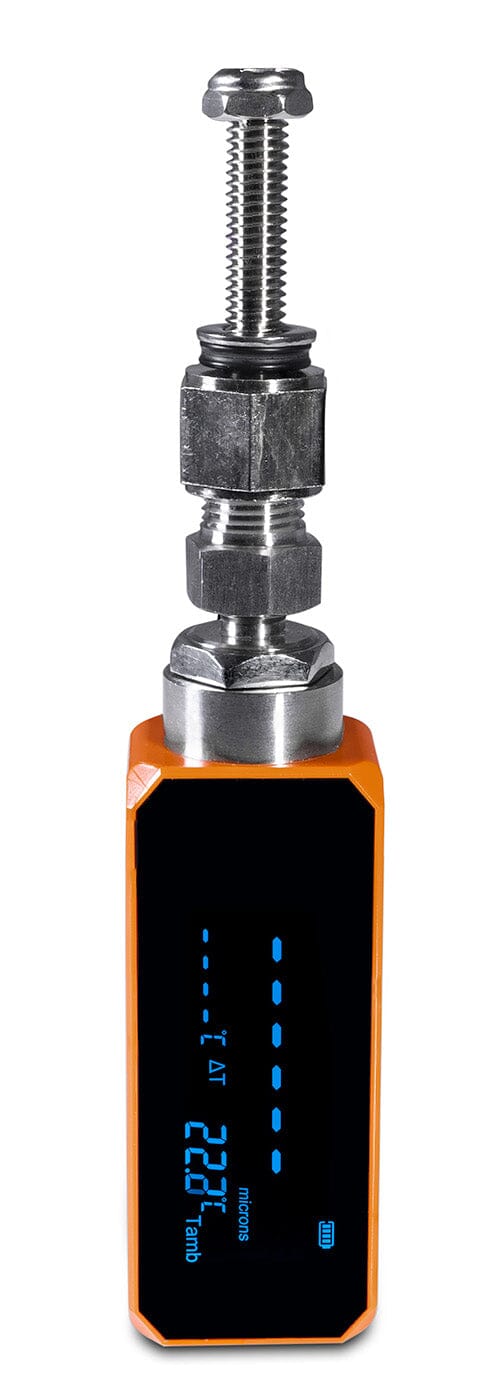
Digital Vacuum Chamber Gauge Upgrade *Wireless
Digital Vacuum Chamber Gauge Upgrade *Wireless After many requests, we have combined our infamous vacuum tight bulkhead with the power of a wireless vacuum gauge that can be a simple upgrade to ANY of our vacuum chamber products or resin traps. For those seeking truly accurate readings at any altitude and wireless monitoring this is the ultimate gauge for any vacuum system!. *To install: All that is required is a 1/2" wrench to remove the original and replace the digital one. The VGW-mini Wireless micron vacuum gauge measures vacuum via just one service port and with no loss of refrigerant. Its compact, robust and smart design support HVAC technicians with numerous intelligent features like the graphic display of measurement data in the Elitech Tools App. Its smart Bluetooth integration allows for data to be stored and evaluated reliably and efficiently, thus saving precious time and resources. Product Features High Accuracy The digital vacuum gauge achieves precise deep vacuum measurements down to single digit resolutions and provides notifications when the evacuation target is met. Smart APP Control Control your micron tester remotely and navigate through all measurement data via Smartphone or Tablet. Quickly and conveniently document your job, finalize your report and export - directly from the job site. Intelligent Judgement of H2O Status The vacuum meter automatically judges physical state of H2O by comparing ambient temperature and water saturation temperature corresponding to the vacuum in the system. Large, Easy-to-Read Display Continual digital readout of evacuation process can be viewed easily on the large, full-view LCD screen. Rechargeable Lithium Battery Built-in rechargeable lithium battery can work up to 20 hours per single full charge, saving troubles of frequent battery change. Product Specifications Measuring Range: 0-19000 micron Operating Temperature: -4℉~140℉ (-20°C~60°C) Interface: 1/4 SAE Accuracy: 1~10,000 microns: ±10% of readings ±10 microns10,000~19,000 microns: ±20% of readings Resolution: 0-400 1 Micron400-3000 10 Micron3000-10000 100 Micron10000-19000 250 Micron Vacuum Units microns, mTorr, in/hg, Pa, Torr, KPa, mbar and psia Battery rechargeable lithium battery (1,000mAh) Overload 27.5 bar Certification CE
$251.52
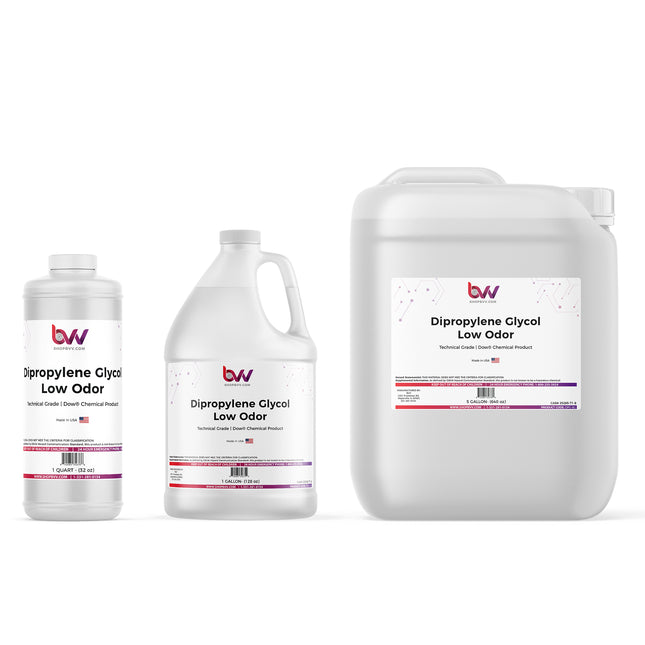
Dipropylene Glycol (DPG) Low Odor
Dipropylene Glycol (DPG) - Low Odor - Technical Grade Dow® Chemical Product Dipropylene glycol (DPG) is a clear, colorless, and odorless liquid that is commonly used as a solvent, humectant, and emulsifier in a wide range of industries. It is a derivative of propylene glycol and consists of two propylene glycol molecules connected by an ether bond. Dipropylene glycol is less hygroscopic than propylene glycol and has a higher molecular weight, which makes it more viscous and less likely to evaporate quickly. In the fragrance and cosmetic industries, DPG is often used as a carrier for essential oils, perfumes, and other aromatic compounds, helping to dissolve and evenly distribute them in formulations. It helps improve the texture of creams, lotions, and other personal care products, while also enhancing their stability and shelf life. Due to its low toxicity, DPG is considered safe for use in food and cosmetic products in regulated amounts. However, as with many chemicals, prolonged or excessive exposure may lead to skin irritation or sensitivity in some individuals. As defined by OSHA Hazard Communication Standard, this product is not known to be a hazardous chemical. Applications and Uses for DPG: Fragrance and Perfume Industry: DPG is commonly used as a carrier or solvent for essential oils and fragrance compounds. It helps to dilute and stabilize fragrances, making them easier to apply and ensuring that the scent lasts longer. Cosmetics and Personal Care Products: DPG is a key ingredient in many personal care products such as lotions, creams, shampoos, deodorants, and soaps. It acts as a humectant (moisture-retaining agent), solvent, and emulsifier, helping to improve the texture, stability, and overall effectiveness of the product. Fog Solution: dipropylene glycol is frequently found in fog juice / liquid, where it works as a base to create heavy low hanging fog vapor. Where as propylene glycol produces a lifting lighter fog vapor that tends to go towards the ceiling. Our low odor formula make it perfect for indoor fog applications. Pharmaceuticals: In the pharmaceutical industry, dipropylene glycol is used as a solvent in medications, especially in liquid formulations like oral solutions, syrups, and injectable drugs. It helps dissolve active ingredients and stabilize the formula. Industrial Applications: DPG is used in the manufacture of paints, coatings, cleaning agents, and lubricants. It functions as a solvent and helps improve the consistency and spreadability of these products. Antifreeze and De-icing Products: While less common than propylene glycol, dipropylene glycol can also be used in some antifreeze and de-icing formulations due to its low freezing point and excellent solvency properties. Food and Beverages: Though not as widely used as propylene glycol, DPG can be found in certain food and beverage products, where it serves as a solvent or stabilizer for flavorings, colorants, and other additives. Textile and Leather Industry: DPG is used as a softener and finishing agent for textiles and leather products, contributing to a smooth texture and enhancing the durability and quality of the materials. What are some of the fragrance products you can make with diproplene glycol (DPG)? Perfumes and colognes Skin care products (creams, lotions, body oils, sun-care products) Deodorants and antiperspirants (roll-on, stick deodorants) Hair care products (shampoos, conditioners, styling, coloring products) Shaving products (creams, foams, gels, after-shave lotions) Bath and shower products Dipropylene Glycol Certificate of Analysis COA Dipropylene Glycol Safety Data Sheet SDS
$25.43 - $1,966.94
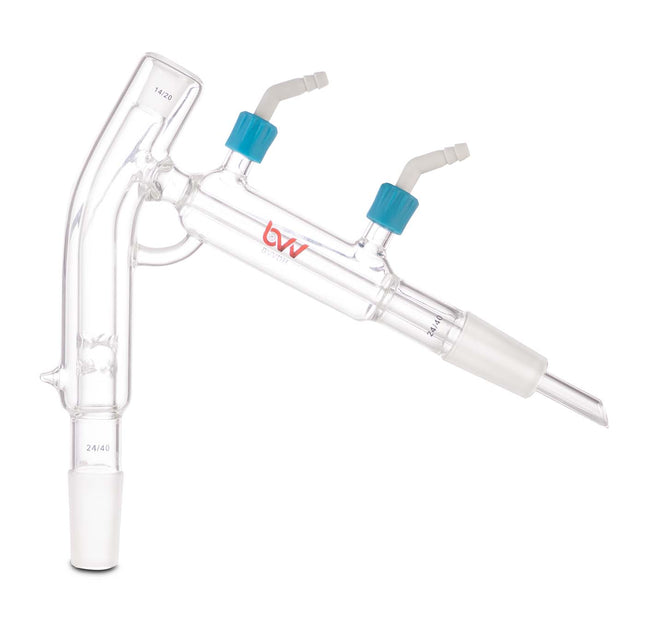
Distillation Head
BVV™ Distillation Head BVV™ Brand Distillation head is made out of 3.3 Boro and comes with (2) 24/40 Ground Male Joints and a 14/20 Female thermometer joint at the top of the head. This head features 2x GL-14 barbs for the condenser and an extended drip tip for the receiving cow. The head measures 8.5" from the bottom 24/40 joint to the top of the head and the condenser is 3.5" long. The head has 2 sets of quad Vigreux and is bent at a 20-degree angle. *Notice to customers: All units are inspected for broken glassware or parts before leaving BVV™. If the unit arrives damaged (this does not include minor imperfections or scuffs in glassware), the customer MUST contact BVV™ within 72 hours from carrier delivery to file a claim. If the customer DOES NOT contact BVV™ within 72 hours from carrier delivery, then BVV™ cannot issue any replacement(s) or compensation for the item; a new purchase will need to be made for a replacement. **Glassware Safety Disclaimer: BVV™ is not responsible for failure of glassware which must be inspected before and after every use because it may eventually develop imperfections or damage through normal usage, mishandling, and stress caused by temperature variations. If an imperfection or damage is noted while inspecting the glassware DO NOT use the glassware because it can fail causing bodily harm or damage to the surrounding area.**
$282.61
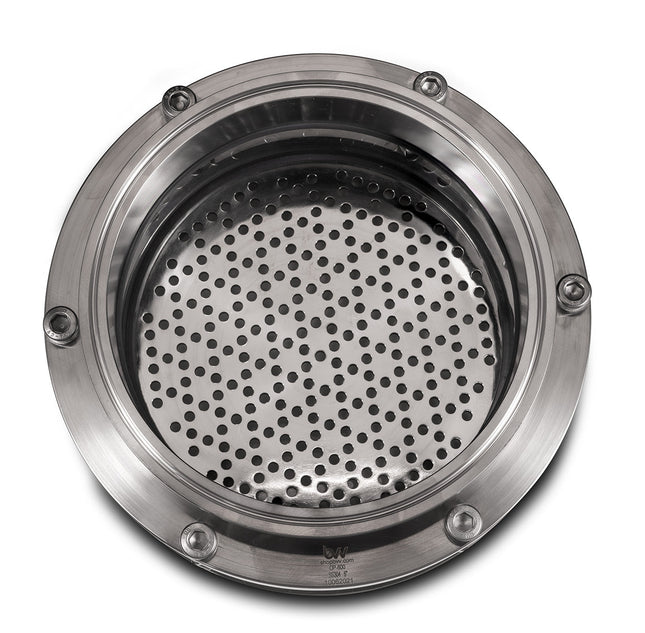
Distribution Plate - 6"
Distribution Plate - 6" The 6" distribution plate is designed to be placed above a tube in shell heat exchanger to help evenly distribute liquid around the heat exchanger. It has a borosilicate sight glass to give you a visual of flow and dispersion into the heat exchanger.
$706.52
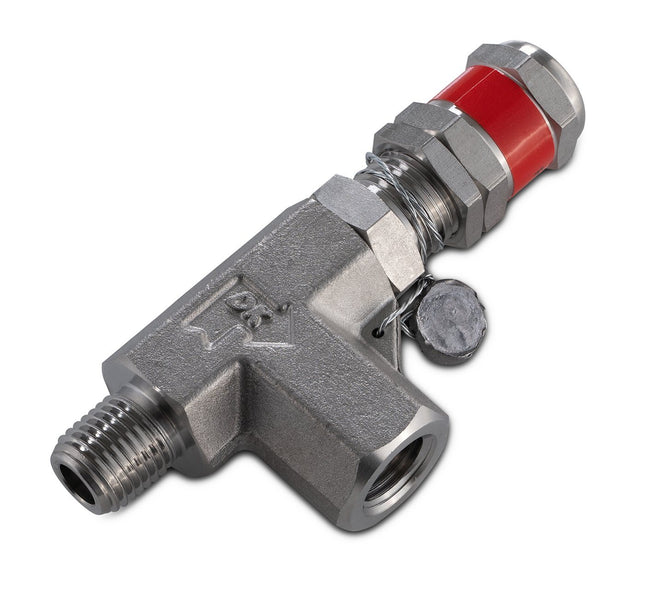
Dk-Lok V63 Series 1/4" 10-250PSI Adjustable Pressure Relief Valve 316SS
V63 Series 1/4" 10-250PSI Adjustable Pressure Relief Valve 316SS DK-LOK® V63/66 series proportional relief valves provide a wide range of set pressures in order to protect your systems against over pressurization resulting in damage to system components. These proportional relief valves open in direct relation to how quickly the system inlet pressure overcomes the set pressure of the spring. They close in direct relation to how quickly the system inlet pressure drops below the spring set pressure. We offer a variety of connection configurations and seal materials to match your system requirements. DK-LOK V63/66 Series Pressure Relief Valve Data Sheet
$325.00
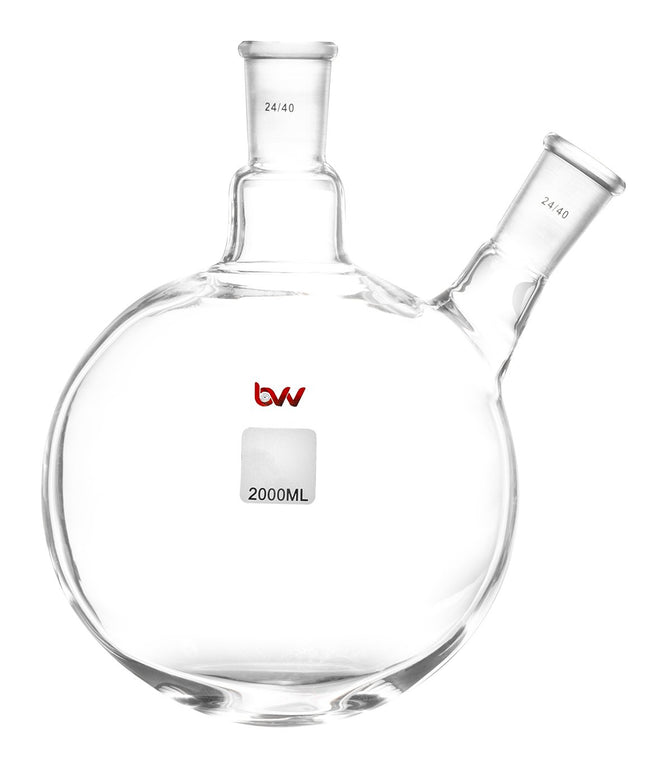
Double Neck Round Bottom Flask
Double Neck Round Bottom Flask Double Neck Round Bottom Flasks can be used for a variety of applications such as capturing and collecting material and also used for boiling off material through distillation. These flasks are double neck with a ground 24/40 joint and require the application of vacuum grease to the ground surface when using the flasks in a vacuum application. The second neck of this flask can also be used for a thermometer port or for introducing material into the flask with a glass funnel. When laying these flasks down it is always recommended to use a cork stand for the flask to prevent breakage and keep the flask upright. Sizes Available: 500ml - 24/40 Ground Joint 1000ml - 24/40 Ground Joint 2000ml - 24/40 Ground Joint *Notice to customers: All units are inspected for broken glassware or parts before leaving BVV™. If the unit arrives damaged (this does not include minor imperfections or scuffs in glassware), the customer MUST contact BVV™ within 72 hours from carrier delivery to file a claim. If the customer DOES NOT contact BVV™ within 72 hours from carrier delivery, then BVV™ cannot issue any replacement(s) or compensation for the item; a new purchase will need to be made for a replacement. **Glassware Safety Disclaimer: BVV™ is not responsible for failure of glassware which must be inspected before and after every use because it may eventually develop imperfections or damage through normal usage, mishandling, and stress caused by temperature variations. If an imperfection or damage is noted while inspecting the glassware DO NOT use the glassware because it can fail causing bodily harm or damage to the surrounding area.**
$55.11 - $77.72
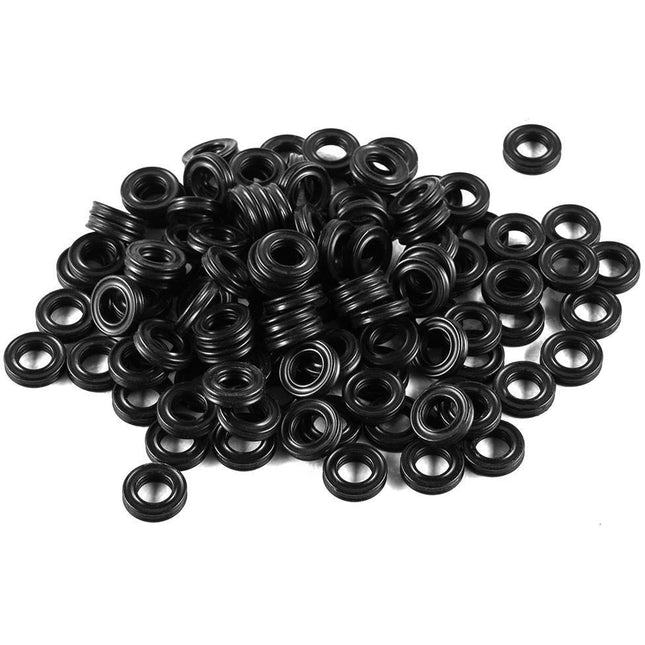
Double Seal X-Profile Oil-Resistant Buna-N O-Ring
Double Seal X-Profile Oil-Resistant Buna-N O-Ring For use with our vacuum Chambers and the fittings/valves that are used for vacuum chamber components. Specifications: Material - Buna-N Rubber Cross Section Shape - X Dash Number - 203 Width - 1/8" ID - 5/16" OD - 9/16" Hardness - Durometer 70A (Medium) For use with: Acetic Acid Ammonia Animal Oils Boric Acid Butyl Alcohol Calcium Hydroxide Citric Acid Diluted Salted Solutions Ethylene Glycol Glycerin Grease Isopropyl Alcohol Mineral Spirits Motor Oil Petroleum Fluids Phosphoric Acid Potassium Hydroxide Sodium bicarbonate Vegetable Oils Specifications Met - ASTM D2000, SAE AS568, SAE J200 Temperature Range - (-30) to 225 F
$2.12
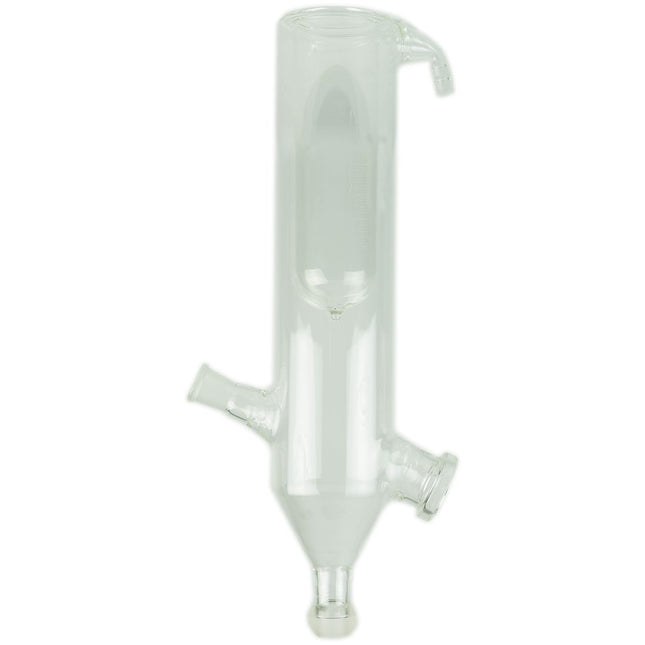
Dry Ice Condenser for 2L Electric Lift Rotary Evaporator
Dry Ice Condenser for 2L Best Value Electric Lift Rotary Evaporators. *Notice to customers: All units are inspected for broken glassware or parts before leaving BVV™. If the unit arrives damaged (this does not include minor imperfections or scuffs in glassware), the customer MUST contact BVV™ within 72 hours from carrier delivery to file a claim. If the customer DOES NOT contact BVV™ within 72 hours from carrier delivery, then BVV™ cannot issue any replacement(s) or compensation for the item; a new purchase will need to be made for a replacement. **Glassware Safety Disclaimer: BVV™ is not responsible for failure of glassware which must be inspected before and after every use because it may eventually develop imperfections or damage through normal usage, mishandling, and stress caused by temperature variations. If an imperfection or damage is noted while inspecting the glassware DO NOT use the glassware because it can fail causing bodily harm or damage to the surrounding area.**
$494.56
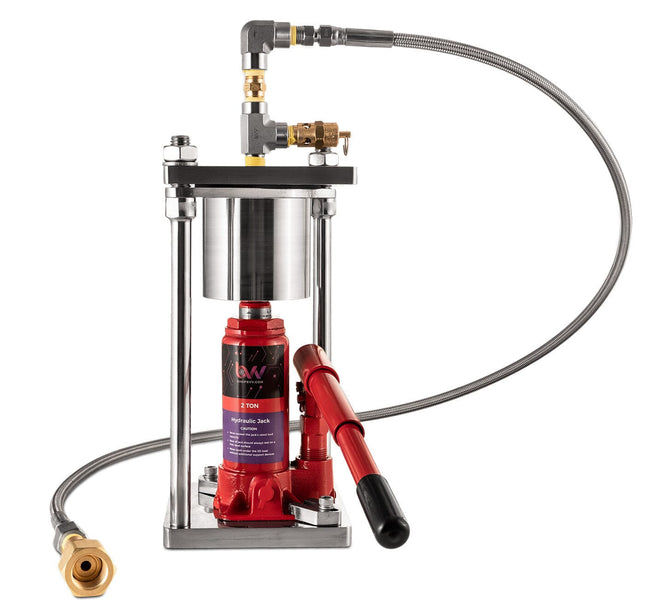
Dry Ice Maker Machine Food Grade - Ultra Dense Block
Dry Ice Maker Machine Food Grade - Ultra Dense Block This dry ice machine makes ice the way you want it! Using 2 tons of hydraulic force to compress the formed CO2 snow into a solid brick. Other dry ice makers produce a loosely packed brick that sublimates quickly. Our bricks take up to 1.5+ hours to sublimate. All of the parts that touch liquid CO2 or ice are food-grade materials. Must use a CO2 tank with a dip tube!! Otherwise you will not get the liquid CO2 needed to make dry ice. Use Specifications 20lbs of CO2 Retail ($1/lb) (*Bulk rates as low as $0.55/lb) $20 Input of CO2 (LBS) per Use 1.75 Dry Ice Output (LBS) per Use 0.38 Lbs of Dry Ice made from 20 lbs CO2 4.34 Cost per lb of Dry Ice made (approx) $4.61 Brick Formation Time (approx) 25 Seconds Connection for CO2 (includes gasket not shown in photo*) CGA 320 Additionally, this dry ice maker comes with these extra items... 1 white plastic shim 1 Black upper gasket 1-Year BVV Warranty The Upgraded Valve Assembly option will include this manifold. Assembled in the USA by BVV *Extreme cold temperatures will cause red paint to flake off of the jack over time. This is purely cosmetic.
$671.19 - $791.30
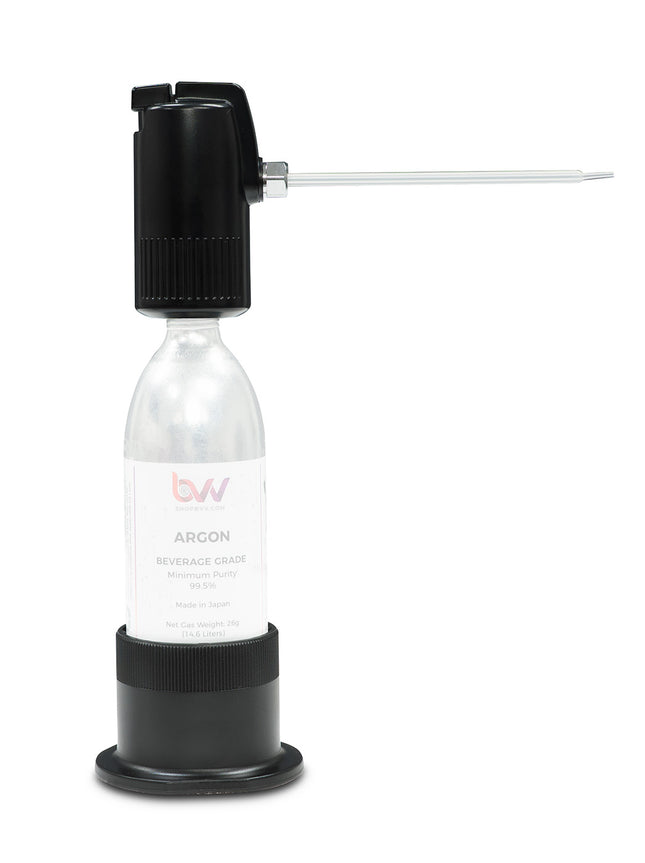
Duster Valve
This duster valve fits our 14.6 Liter Argon Canister (Sold separately.)
$134.24
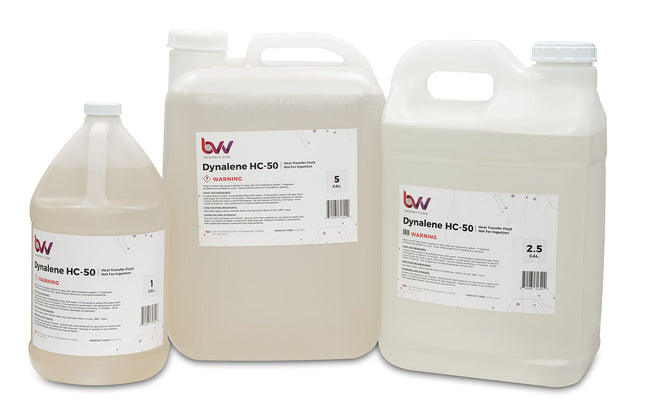
Dynalene HC-50 Heat Transfer Fluid
Dynalene HC-50 Dynalene HC/Potassium Formate is a water-based, low-temperature heat transfer fluid engineered to deliver the excellent heat transfer performance in applications down to -58°F (-50°C). With the temperature range -50°C to +218°C, Dynalene HC easily exceeds the performance of other water-based chemistries such as glycol /water mixtures, calcium chloride/water as well as hydrocarbon and silicone-based fluids. The fluid comes in five concentrations and is non-toxic, non-hazardous and non-flammable. Effective Calcium Chloride Alternative Dynalene HC/Potassium Formate heat transfer fluid is an excellent alternative to calcium chloride and other brine solutions because it demonstrates a higher thermal efficiency and lower corrosion rate. This fluid, as compared to other glycols, calcium chloride, and other brine solutions, should lower the leak and spillage rate, and reduce maintenance and repair costs on refrigerated systems. This is due to Dynalene HC's use of "safe" chemistries resulting in a high level of corrosion inhibition. The viscosity of calcium chloride solutions is also noticeably higher than Dynalene HC heat transfer fluid, which in turn makes Dynalene HC a more thermally efficient solution. Key Features: 100% Biodegradeable Non-Toxic Non-flammable Aqueous-Based Superior heat transfer characteristics Attractive alternative to glycols and brines Applications: Pharmaceutical process Food and beverage Chemical process Climatic Chamber LPG Processing Low-Temperature Baths Temperature Range: Open systems: HC-50: -51°C (-60°F) to 110°C (230°F)Closed Systems: HC-50: -50°C (-58°F) to 218°C (425°F) Technical Data Sheet MSDS Engineering Guide
$169.56 - $19,075.94
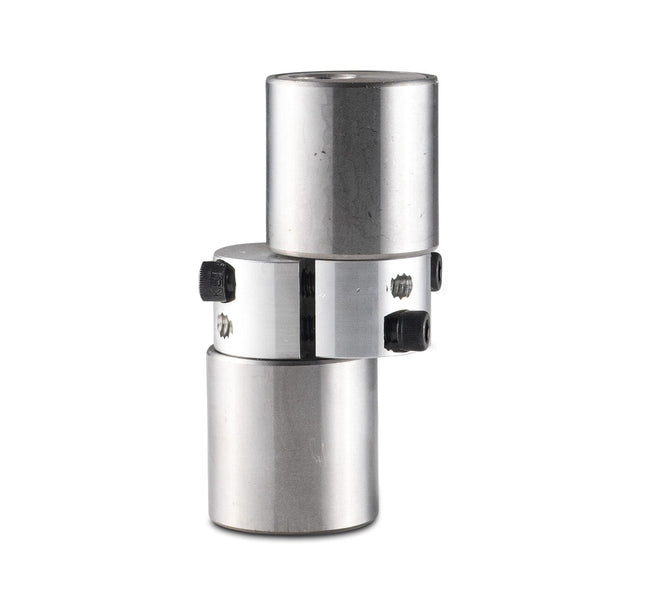
Eccentric Recovery Pump Shaft Adapter
Eccentric Recovery Pump Shaft Adapter Replacement Eccentric adapters for TRS or BVV recovery pumps. Model numbers shown below- BVV-EC-TRS: TRS21 BVV-EC: BVV2CYL BVV4CYL BVVCMEP-RETRO
$105.98 - $148.37

Eco Oven PID Controller with Display Screen
Eco Oven PID Controller with Display Screen Compatible with older Orange/Black Models and newer Purple/White Models. Specifications BVV ECO Temp Range: 0-212°F Temp Accuracy: +/- 1° Built-In Calibration: Yes Temp Display Unit: C or F Timer Range: 0-999 Electrical Requirements: 110v @ 60Hz Compatible Ovens: 09ECO / 19ECO Shipping Dimensions: 5 x 5 x 5 - 1lbs SKU: ECOPID
$282.61
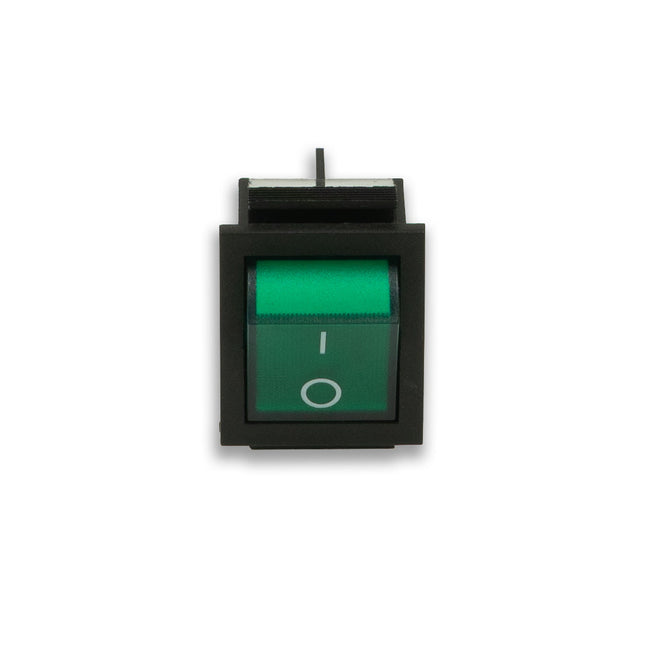
Eco Oven Power/LED Switch
Green Eco oven power switch.
$35.33
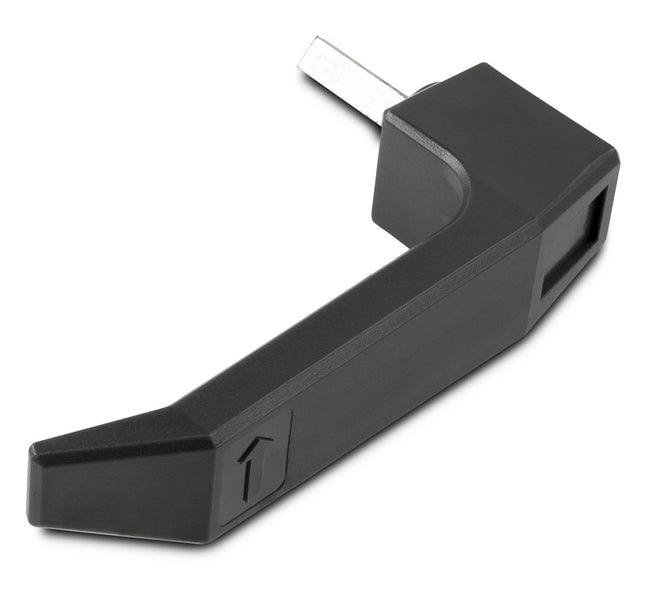
Eco Oven Replacement Handle
This is a replacement handle for BVV™ Eco ovens.
$77.72
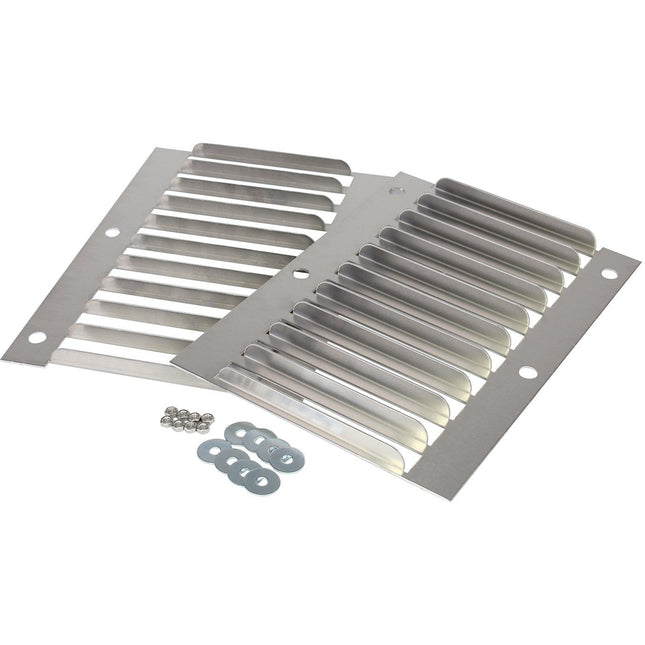
ECO Oven Shelf Bracket Kit
ECO Oven Shelf Bracket Kit This bracket kit has an updated design to make it easier to slide the shelves in and out of the oven without breaking the budget.(Note: this kit only fits the Best Value Vacs 0.9CF and 1.9CF ECO Oven line)
$7.07 - $8.48

ECO Oven Shelves
ECO Oven Shelves These are stainless steel oven shelves for BVV™ ECO Ovens and fit either a 0.9CF or a 1.9CF ECO Oven. Specifications: 0.9CF - 10.9" (278mm) x 11.2" (285mm) x 1/8" Thickness 1.9CF - 14.1" (359mm) x 15.4" (392mm) x 1/8" Thickness
$45.22 - $59.35
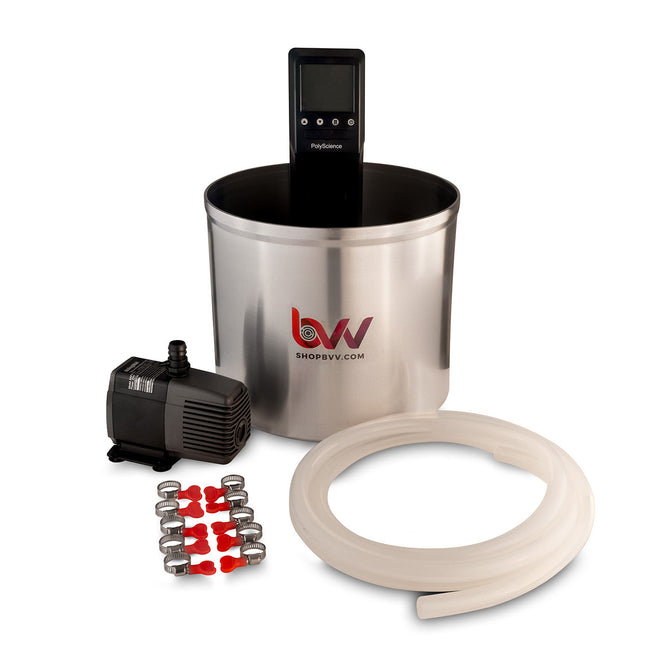
Economy Recirculating Heater Kit
Economy Recirculating Heater Kit The Economy Recirculating Heater Kit is designed to provide efficient heating and circulation at an affordable price. The kit includes a submersible water pump for fluid circulation, an LX or MX immersion heater, and all tubing and hose clamps needed to pair with your system. The tubing is 1/2" ID x 5/8" OD and the pump fitting is 1/2". The pump will circulate up to 594 GPH. Economy Recirculating Heater Kit Includes: Polyscience LX or MX Immersion Circulator EcoPlus Eco 633 Fixed Flow Submersible/Inline Pump 594 GPH 5 Gallon Aluminum Pot 10 Feet of 1/2" Silicone Tubing 10 Pack of Adjustable Stainless Steel Tubing Clamps
$2,402.15

EPDM Tri-Clamp Gaskets
EPDM Tri-Clamp Gaskets EPDM Tri-Clamp gaskets are the preferred choice of material for brewing and similar alcohol based applications. EPDM Gaskets offer a low temperature rating and have better physical properties than Viton gaskets; the best part is that they cost less than Viton and provide the same chemical resistance to many alcohols Note: EPDM is not recommended for use with hydrocarbons Key Features: Low temperature range Low costs Better compressibility and springiness Excellent resistance to alcohols Good tear resistance Good abrasion resistance FDA CFR 177.2600 – Rubber and Rubber-Like Material for Repeated Use/Contact with Food. FDA CFR 177.1550 – Fluorocarbon Resins for Repeated Use/Contact With Food, Dairy & Pharmaceutical Products. Sizes Available: 1.5" 2" 3" 4" 6" 8" - easy on flanged 10" - easy on flanged 12" - easy on flanged Technical Specifications: Material EPDM Color Black Connection Type Tri-Clamp Conformance FDA Compliant / Meets 3A Standards Thermal Properties: -Low Temperature Range -55°F -Minimum for Continuous Use (Static) -40°F -Brittle Point -55°F -High Temperature Range +275°F -Maximum for Continuous Use (Static) +275°F Gas Permeability Excellent Durometer or Hardness Range 65 Shore A Tensile Strength Range 200-3500PSI Elongation Range (%) 350-650% Abrasion Resistance Excellent Tear Resistance Excellent Resilience / Rebound Good Thread Style Female Chemical Compatibility: Butane D - Severe Effect Propane (liquified) D - Severe Effect Alcohols: -Amyl A - Excellent -Benzyl B - Good -Butyl B - Good -Diacetone A - Excellent -Ethyl A - Excellent -Hexyl C - Fair -Isobutyl A - Excellent -Isopropyl A - Excellent -Isopropyl A - Excellent -Methyl A - Excellent -Octyl C - Fair -Propyl A - Excellent No more than a -40 F operating temperature should be used with EPDM. BVV is not responsible if incompatible chemicals, solvents, or operating temperatures are used in the user's system.
$1.41 - $72.06
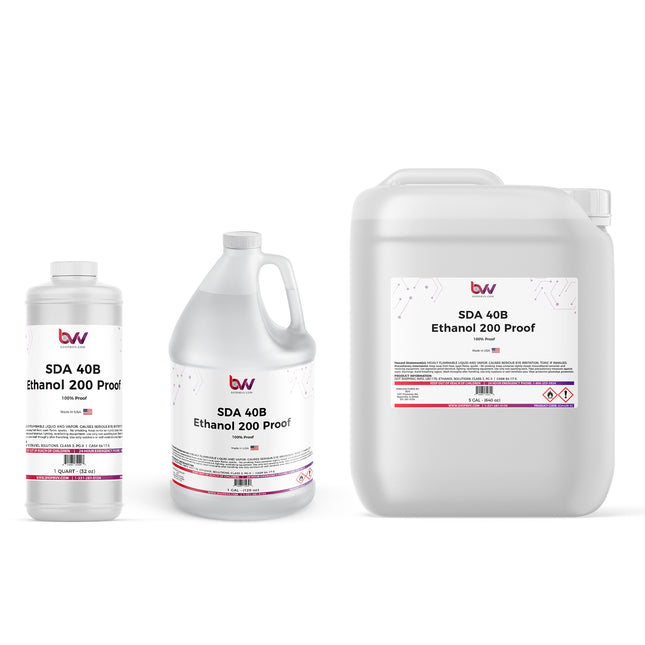
Ethanol 200 Proof, SDA 40B (100% ABV) Lab Grade
BVV Ethanol 200 Proof, SDA 40B 100% AVB (alcohol by volume) HAZMAT ITEMS ARE NON-REFUNDABLE. ALL SALES ARE FINAL Specially denatured alcohol formula 40B, contains trace amounts (less than 0.125% combined) of the denaturants tert-butyl alcohol and denatonium benzoate, compliant with United States Title 27 of the Code of Federal Regulations, Section 21.151. SDA-40B denatured ethanol is a popular choice for cosmetic applications because studies have shown low toxicity in topical applications. It is very popular in perfumes and colognes, earning the nickname of perfumer's alcohol. It is also often used as the alcohol component to hand sanitizers. The high solvency power of SDA 40B 200 proof lends to ideal use in the production of inks, adhesives and coatings. The term "200 proof" refers to the alcohol's strength, which is equivalent to 100% alcohol by volume (ABV). This means that there is no water, or other substances present in the alcohol, making it very pure and highly concentrated. Chemical Formula: CH3CH2OH Molecular Weight: 46.07 CAS Registry Number: 64-17-5 Appearance Colorless Liquid Odor: Sweet, alcohol-like Density 0.789 g/cm3@ 20 °C (68 °F) Boiling Point: 78.5 °C (173.3 °F) Solubility in water: Completely Soluble GHS Pictograms: GHS Signal Word: Danger GHS Hazard Statements: H225, H319, H335, H336 GHS Precautionary Statements P210, P233, P240, P241, P242, P243, P280, P303+P361+P353, P370+P378, P403+P235, and P501 UN Identification Number: 1170 Proper Shipping Name: Ethanol Transport Hazard Class: 3 Packing Group: II DOT Placard: Ethanol 200 Proof, SDA 40B Certificate of Analysis (COA) Ethanol 200 Proof, SDA 40B Safety Data Sheet (SDS)
$25.43 - $4,451.05
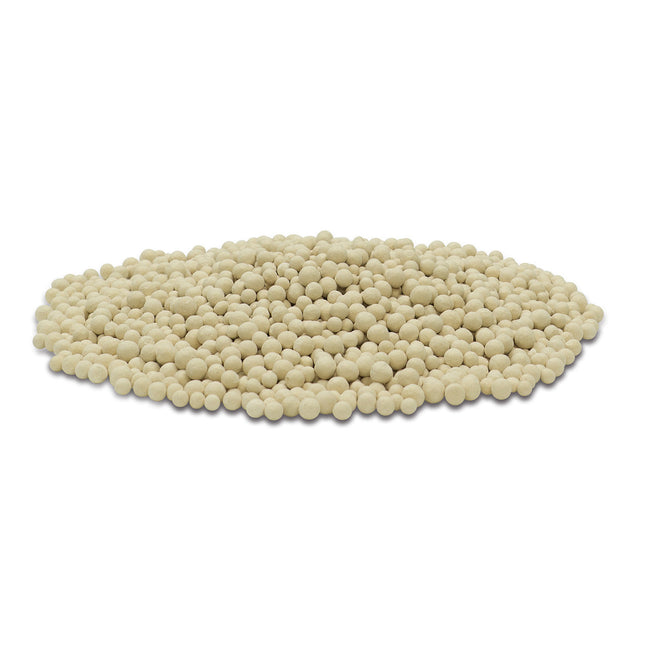
Ethanol Dehydration Sieve Beads Type 3A
Ethanol Dehydration Sieve Beads Type 3A Ethanol Dehydration Beads Type 3A is specifically designed for the dehydration of fuel grade ethanol. Ethanol can only be dried to an azeotropic point of 95.6% purity by traditional distillation. After that point, 3A selectively adsorbs the water from the solution to produce anhydrous ethanol with less than 0.5% water. This is the drying method of choice for fuel ethanol producers. With these beads you can remove water to achieve a metered proof of 200 or 99.999%. Chemical Formula: K12[(AlO2)12(SiO2)12] · nH2O. Typical Applications: Ethanol Dehydration Grade Molecular Sieve products (sieve beads) are typically used for the dehydration of fuel grade ethanol PSA and VSA systems. Available Products Ethanol Dehydration Grade Molecular Sieve: Product Adsorbent Type Size Form 3A EDG Molecular Sieve 3A 4 x 8 Mesh Beads Handling & Storage Recommendations: Store in a dry location to prevent unintentional water adsorption. Reseal packages after opening to prevent contamination and unintentional water adsorption. We recommend that you rotate stock so the oldest material is used first. Please read the safety data sheet to ensure proper handling and always wear personal protection equipment when handling molecular sieve. Product Data and Safety Information: Molecular Sieve 3A Technical Data Sheet Molecular Sieve 3A Safety Data Sheet Note: 20lb size comes as set of 2x 10lb containers. Size Recommendations: 2LB - Will fit our Molecular Sieve Filter Drier 4LB - Will fit our XL Molecular Sieve Filter Drier 6LB - Will fit our 30LB Extractor
$25.43 - $1,024.45
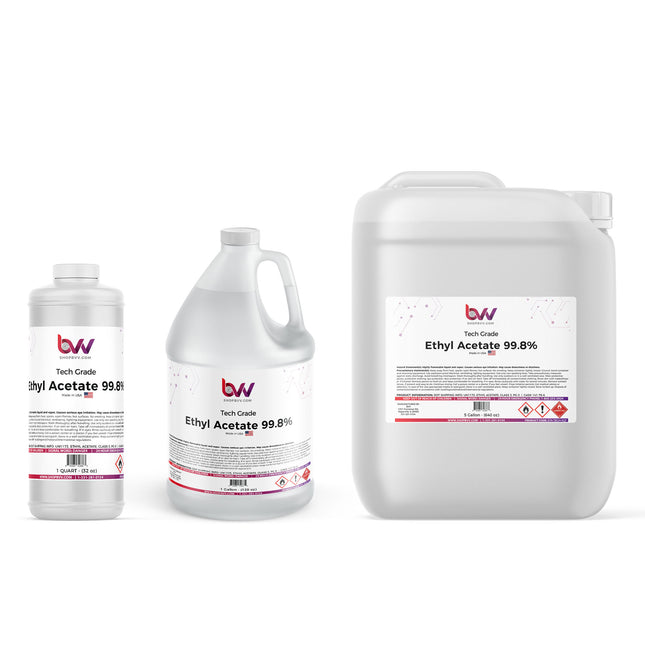
Ethyl Acetate Tech Grade 99%
Ethyl Acetate Tech Grade 99.8% C4H8O2 Ethyl acetate is a widely used solvent. Ethyl acetate is the acetate ester formed between acetic acid and ethanol. It has a role as a polar aprotic solvent. Ethyl acetate appears as a clear colorless liquid with a fruity odor. Its flash point is 24 °F and is less dense than water. It's vapors are heavier than air. Ethyl acetate is a common solvent for column and thin-layer chromatography. It is also used as a defatting agent for extraction and can be used to extract oil from organic materials. Ethyl acetate is commonly used to extract oil from coffee. Ethyl acetate is an organic solvent that is volatile and flammable. Chemical Formula: C4H8O2 Molecular Weight: 88.106 CAS Registry Number: 141-78-6 Appearance Colorless Liquid Odor: nail polish-like, fruity Density 0.902 g/cm3 Boiling Point: 77.1C/170.8F Solubility in water: 8.3 g/100 mL (at 20 °C) GHS Pictograms: GHS Signal Word: Danger GHS Hazard Statements: H225, H319, H336 GHS Precautionary Statements P210, P233, P240, P305+P351+P338, P403+P235 UN Identification Number: 1173 Proper Shipping Name: Ethyl Acetate Transport Hazard Class: 3 Packing Group: II DOT Placard: How Is Ethyl Acetate Produced? Ethyl acetate is primarily produced through the esterification reaction between ethanol (ethyl alcohol) and acetic acid. This reaction typically takes place in the presence of an acid catalyst, such as sulfuric acid or strong acidic ion exchange resins. The production process can be summarized as follows: Preparation of Ethanol: Ethanol, the primary raw material for ethyl acetate production, is typically produced through fermentation of biomass, such as grains, sugarcane, or corn, followed by distillation to obtain high-purity ethanol. Preparation of Acetic Acid: Acetic acid, another key raw material for ethyl acetate production, can be produced through various methods, including oxidation of acetaldehyde, methanol carbonylation, or direct synthesis from natural gas or biomass. Esterification Reaction: In the esterification reaction, ethanol and acetic acid are mixed together in the presence of an acid catalyst. The acid catalyst helps facilitate the reaction by providing a suitable environment for the formation of the ester bond. The esterification reaction can be represented by the following chemical equation: Ethanol + Acetic Acid ⇌ Ethyl Acetate + Water Separation and Purification: After the esterification reaction, the mixture typically undergoes separation and purification steps to isolate ethyl acetate from other reaction byproducts and unreacted starting materials. This may involve distillation, extraction, or other separation techniques to obtain pure ethyl acetate. Recovery and Recycling: Any unreacted ethanol or acetic acid, as well as other byproducts, are usually recovered from the process stream and recycled back into the production process to improve efficiency and minimize waste. The production of ethyl acetate can be carried out in batch or continuous processes, depending on the scale and requirements of the production facility. The process may also vary depending on factors such as the choice of catalyst, reaction conditions, and purification methods. Overall, ethyl acetate is a widely used solvent with applications in industries such as coatings, adhesives, pharmaceuticals, and flavorings. What Is Ethyl Acetate Used For? Ethyl acetate is a versatile solvent with a wide range of industrial, commercial, and laboratory applications. Some common uses of ethyl acetate include: Paints and Coatings: Ethyl acetate is commonly used as a solvent in the formulation of paints, varnishes, lacquers, and other coatings. It helps dissolve resins, pigments, and binders, allowing for proper application and drying of the coatings. Adhesives and Sealants: Ethyl acetate is utilized as a solvent in the production of adhesives and sealants, particularly those used in woodworking, construction, and automotive industries. Printing Inks: Ethyl acetate is a key component in the formulation of printing inks for various printing processes, including flexographic, gravure, and screen printing. It helps dissolve the ink pigments and other additives, ensuring proper printing quality and performance. Pharmaceuticals: Ethyl acetate is used in pharmaceutical manufacturing processes as a solvent for extracting and purifying natural products, synthesizing pharmaceutical compounds, and formulating dosage forms such as tablets and capsules. Flavors and Fragrances: Ethyl acetate is employed in the production of flavors and fragrances for use in food, beverages, cosmetics, and personal care products. It serves as a solvent for extracting and concentrating natural flavors and essential oils. Nail Polish and Nail Polish Removers: Ethyl acetate is a common ingredient in nail polish formulations and nail polish removers. It helps dissolve the resins and pigments in nail polish and effectively removes nail polish from nails. Cleaners and Degreasers: Ethyl acetate is used as a solvent in cleaning products, degreasers, and surface coatings for removing grease, oil, and other contaminants from surfaces and equipment. Analytical Chemistry: Ethyl acetate is frequently used as a solvent in analytical chemistry techniques such as liquid-liquid extraction, chromatography, and sample preparation for gas chromatography. Extraction of Natural Products: Ethyl acetate is used in the extraction of natural products from plants, herbs, and botanicals due to its ability to selectively dissolve certain compounds while leaving others behind. These are just a few examples of the diverse range of applications for ethyl acetate. Its versatility, low toxicity, and pleasant odor make it a popular choice for various industrial and commercial uses. However, it's important to handle ethyl acetate with care, as it is flammable and may pose health risks if not used properly. What Are The Hazards of Ethyl Acetate? While ethyl acetate is generally considered to have low toxicity compared to many other organic solvents, it still poses some hazards that should be taken into consideration, especially when handling it in industrial or laboratory settings. Some of the hazards associated with ethyl acetate include: Flammability: Ethyl acetate is highly flammable and can form explosive mixtures with air. It has a low flash point and can ignite easily in the presence of a spark, flame, or heat source. Proper precautions, such as storing ethyl acetate in tightly sealed containers away from ignition sources and ensuring adequate ventilation to prevent the buildup of flammable vapors, are necessary to minimize the risk of fire and explosions. Health Effects: While ethyl acetate is considered to have low acute toxicity, exposure to high concentrations of vapors or prolonged exposure may cause irritation to the eyes, nose, and throat. Inhaling ethyl acetate vapors in large quantities may also cause dizziness, headaches, nausea, and central nervous system depression. Skin contact with ethyl acetate may result in irritation or dermatitis. Individuals with pre-existing respiratory conditions or sensitivities may be more susceptible to the effects of ethyl acetate exposure. Environmental Impact: Ethyl acetate can have adverse effects on the environment if released into the air, water, or soil. It is volatile and can evaporate quickly from spills or during use, contributing to air pollution. Ethyl acetate may also pose a risk to aquatic organisms if it contaminates water bodies. Proper handling, storage, and disposal practices are necessary to prevent environmental contamination. Reproductive and Developmental Effects: Some studies have suggested that exposure to high concentrations of ethyl acetate may have adverse effects on reproductive health and fetal development. Pregnant women exposed to ethyl acetate vapors should take precautions to minimize exposure to protect both their health and the health of the developing fetus. Sensitization: Prolonged or repeated exposure to ethyl acetate may lead to sensitization reactions in some individuals, resulting in allergic reactions upon subsequent exposure. It's important to follow safety guidelines and regulations when handling ethyl acetate to minimize risks to human health and the environment. This includes using appropriate personal protective equipment (such as gloves, goggles, and respiratory protection), ensuring adequate ventilation in work areas, and implementing proper storage and disposal practices. Training on safe handling procedures and emergency response protocols should also be provided to personnel working with ethyl acetate. Certificate of Analysis Safety Data Sheet (SDS)
$28.26 - $1,045.64
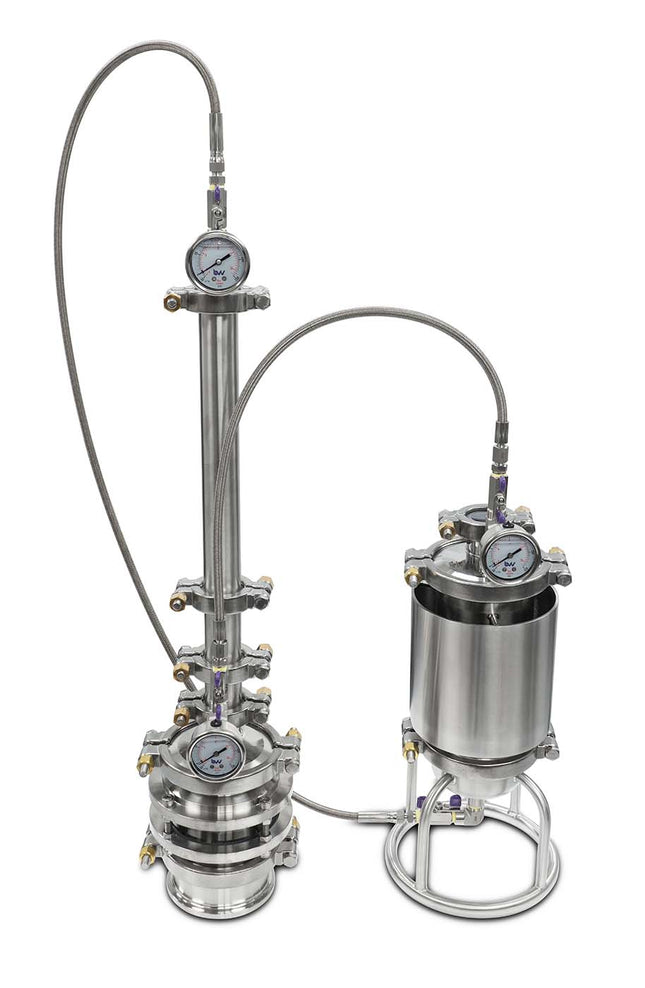
EVO Mini Closed Loop Extractor
EVO Mini Closed Loop Extractor (System comes with 1 yr. limited warranty) The EVO Mini 90 gram closed-loop extractor was designed to provide the same versatility & capability of our EVO Extractor line, allowing both the use of adsorbent filtration and pre-chilling of solvent utilizing the inline Color remediation column and the Sleeved EVO recovery tank. The EVO Mini is the perfect small batch R&D system or top-of-the-line mini extractor. Perform small batch testing of new biomass or R&D new adsorbent filtration recipes without utilizing large volumes of biomass. The Evo Mini allows you to test with hot or cold solvent, try out different ratios of powders or granular medias, and test extract new biomass before running a larger extraction. The EVO Mini comes complete with a top fill injection manifold including a compound gauge, a stainless steel butterfly valve with a 1/4" MJIC connection that injects solvent directly into the 1.5"x 12" 90-gram material column which is enclosed by 2x 100 micron Buna-N mesh gaskets. Just below the 90-gram material column is the inline 1.5" x 3" color remediation column just below the material column with a 30-gram media capacity and a filter stack utilizing both a 5 micron & 1 micron sintered disk. Below the filter stack the EVO Mini drains into the collection base equipped with a compound gauge, a 4" Short sight glass, and a stainless steel butterfly valve with a 1/4" MJIC connector. The Collection base can accommodate up to 1.1lbs of butane perfect for a 5:1 solvent to biomass ratio. Which can be evaporated with ease when used in conjunction with the Mini Evo sleeved recovery tank filled with dry ice and a hot water bath. ***Note: Solvent not included with systems unless ordered separately. Any order with butane WILL NOT SHIP EXPEDITED.*** ***DISCLAIMER: This unit is intended for LEGAL purposes only, to be used in accordance with local laws and ordinances. Use only in extremely well-ventilated areas. Check with your local fire marshal for guidance when operating indoors. KEY BENEFITS Meets or exceeds all industry listed standards Versatile in running butane, propane, and other blended solvents Perfect for R&D of media combinations or testing fresh biomass Inline color remediation Pre-chilling of solvent Extractor Configuration: Explorer: Our standard, most economical setup, perfect for the entry-level extractor on a budget. This option comes equipped with single pin clamps rated to a service pressure of 300PSI for the 4" clamp and 500PSI for the 1.5" clamp at 70F. Elite: The Elite series is the premium version of the EVO Mini that comes equipped with High-pressure clamps rated to a service pressure of 800PSI for the 4" clamp and 1500PSI for the 1.5" clamp at 70F. *All configurations are pressure tested for 24 hours before shipment using nitrogen at 100PSI. Although many of the components of the EVO Mini are rated to withstand well above 100PSI during extraction we do not recommend pressurizing any system past 100PSI. During normal operation of the EVO Mini pressures typically don't exceed 50PSI* Explorer Elite Single Pin Clamps High-Pressure Clamps Unit Includes: Injection manifold complete with a compound gauge, 1/4" butterfly valve, and a 1/4" MJIC Connection. 1.5"x12" 90 gram material column. 1.5"x6" adsorbent filtration column with 30g gram media capacity. Adsorbent filtration filter stack including 5 micron and 1 micron sintered disks. 4" collection base with splatter platter & short sight glass complete with a compound gauge, and a 1/4" butterfly valve with a 1/4" MJIC Connection. 4"x8" Sleeved EVO Recovery tank with compound gauge, polycarbonate sight glass, and a 1/4" butterfly valve, and a 1/4" MJIC Connection. (1) 1/4" 48" FJIC Stainless Steel Injection hose (1) 1/4" 24" FJIC Stainless Steel Recovery Hose Specifications: 1.5"x 12" 304 Stainless Steel Material Column- 90 gram capacity 316 Stainless Steel Fully Encapsulated Miniature Ball Valves System Rated to 150PSI Multiple 37-degree FJIC port connections 304 Stainless collection base Tri-Clamps at all interfaces make for a high pressure/standard pressure, easy-clean unit BUNA-N Gaskets are designed for Oil Processing Temp range -40-200F, and have superior solvent resistance Construction: All components are made of 304 Stainless Steel. Max Vacuum -29.9inHg High Polish Interior *Note: Column capacity may vary depending on the density of packed material and packing density. Capacity is calculated using the industry standard of 4.2g/in3. This is the upper limit for column capacity. Low density, uncut, and/or lightly packed material can reduce capacity by 50%. For best results, we recommend to tightly pack coarse ground material.
$1,130.43 - $1,215.21
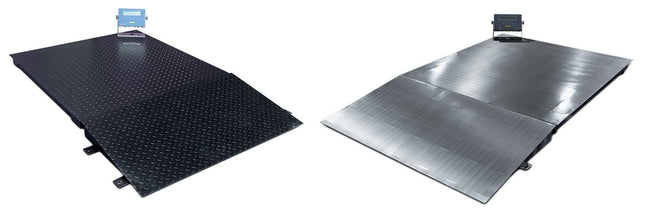
Explosion Proof Platform Scales - 3000KG
These Explosion proof platform scales come with a ramp and can handle a maximum load of 3000KG. Scale measurement: 1200MM X 1200MM (47.24" x 47.24") Scale height: 110mm (4.33") Scale weight: 83KG (182.984LBS) Note: This scale only measures in KG
$3,179.32
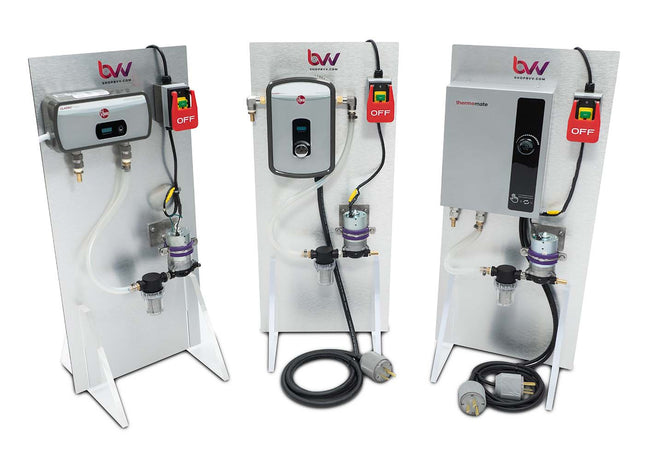
Express Extractor Heater 3.5 to 11KW of heating Power!
Express Extractor Heater by BVV™ 1 Year Warranty, Built in house ready to ship in 24hrs! The BVV™ Extractor Heater is our built in house high power extractor heater circulator. We have 3 model units 3,500, 8,000 & 11,000 WATTS! Each upright panel comes with 25ft of silicone tubing and a 5 gallon reservoir. Each system is capable of heating up to 140°F and can exceed the demand of even the largest extraction vessels. The system operates on an independent nitrile diaphragm pump circulating water @1.5GPM. The pump can self prime up to 11ft. and within a typical extractor this pump is operating around 30-50psi in circulating pressure. BVV Part# KW AMPS Voltage Breaker AMPS Installed Plug Rec. Wire Size Temp. Range EEH-3.5KW 3.5 29 120V (1x30)A L5-30P Plug 10 AWG 120°F EEH-8KW 7.3 33 240V (1x40)A 6-50P 8 AWG 80-140°F (adjustable) EEH-11KW 11 46 240V (2x30)A 6-30P (2x12) AWG 80-140°F (adjustable) EEH-5.5KW 5.5 25 220V (1X25)A 6-30P 10 AWG The 3.5KW unit has a digital temperature display and cannot be adjusted from the standard factory programmed 120°F. During normal recovery operations used with our extractors this fluctuates between 120-157°F. Though there is a lack in temperature accuracy we measure at the extractor base a consistent recovery temperature around 122-125°F. These heater are built with an electrical failsafe that prevents them from operating dry, and will auto shut down if the flow is unexpectedly stopped to protect the unit. The attached in-line filter will prevent any debris from entering the heater. A clogged filter will also prevent the heater from operating. General Extractor Size Heater Recommendations for these Models 0-2lbs Biomass EEH-3.5KW 2-5lbs Biomass EEH-8KW 5-20lbs Biomass EEH-11KW At BVV our favorite model is the 11KW. The unit does require two 240V 30A Single phase circuits, but its now a permanent fixture in or laboratory. Every model will pump out lots of heat for any recovery situation, could you use a 3.5KW heater on a 5 or 10lb unit? Absolutely, Just expect longer times to reach the heaters maximum setting. For example we heated 3x 6"x48" fully jacketed columns to 140°F (heater temp) in about 11 minutes using the 11KW heater. Another example is a 1lb Apollo extractor with a fully jacketed collection base heated to 120°F in about 8-9 min. using the 3.5KW extractor heater. ETL Listed to UL 499 and CSA (Canada) Utilizing all UL approved components for the heater, pump, and emergency stop switches, wiring harnesses, plugs, and electrical housings. The heater arrive with the specified plugs attached, however all of the models can be hardwired directly if you choose not to use a plug. *240V units can be used on 208V single phase with 25% reduced temperature output Express Extractor Heater Quick Start Guide
$1,519.01 - $1,942.92
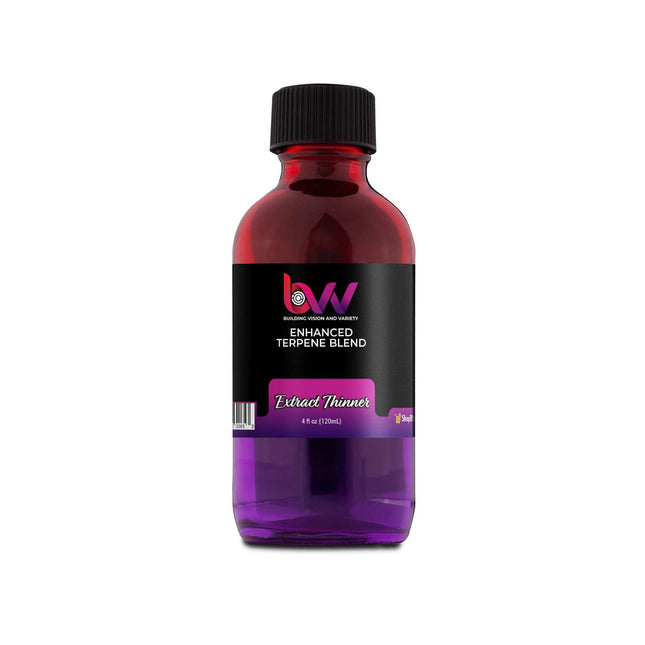
Extract Thinner *Compare to True Terpenes Viscosity
BVV™ Extract Thinner All sales are final. Orders can be refunded prior to fulfillment and shipping but once the order has been fulfilled and/or shipped, no refunds will be issued. Due to the hazardous nature of our product, we are unable to accept returns. BVV™ Extract Thinner is a diluent made from natural terpenes. It does not contain PG, VG, PEG, MCT, Squalane, Squalene, Coconut oil, Triethyl Citrate, or Vitamin E Acetate. Our Extract Thinner will combine with your terpenes and oil and is formulated to minimize flavor and aroma impact. Oure Extract Thinner is not a thickening nor cutting agent and not recommended to be used with CBD. This product is designed to be used with winterized extracts. It is a clear liquid with a faint, odor that will minimally contribute to the aroma and flavor. In order to provide complete transparency and illicit customer confidence, all ingredients are disclosed. INGREDIENTS: Phytol, Beta-Caryophyllene, D-Limonene, Farnesol and Nerolidol Dilution Use Instructions: First infuse your terpene strain or flavor into your winterized extract. Typically 1-5% by volume. Then to use the Extract thinner add 1-3% by Total Volume to thin the extract. Made in the USA by cGMP facilities ISO 9001:2015 Shelf Life: 3 Years Storage Requirements: Keep in the original container, lid securely tightened and away from heat, open flames, sunlight, combustible materials, and hot surfaces. Store in a cool dry place. Improper storage can cause terpenes to degrade.
$22.61 - $395.65

Extraction RACK # 2
BVV™ Extraction RACK # 2 (Assembled units come with a 30-day warranty) Note: The unit does not come assembled - select "pre-assembled" from the drop-down menu to have the unit assembled by BVV before shipping Pipe hangers are not included There is no warranty on unassembled units Shipping Notice: If the customer orders the rack as assembled, then the item will only ship via freight and there will be additional shipping charges. Extraction Rack 2 Technical Drawing This rack fits the following BVV™ Extraction Systems: 8.5LB Athena 2LB Little Icarus 5LB Icarus Specifications (Does not include height with casters) Main Base Dimensions 33" X 30" Vertical Dimensions 33" X 48"
$1,059.77 - $1,342.38
You have seen 576 out of 1073 products
















































